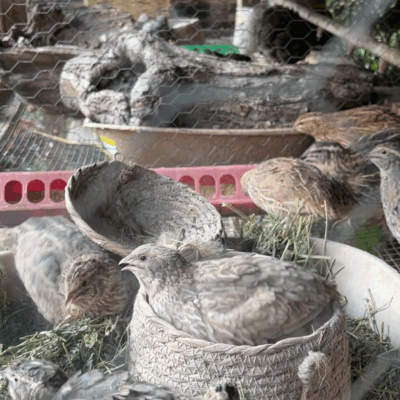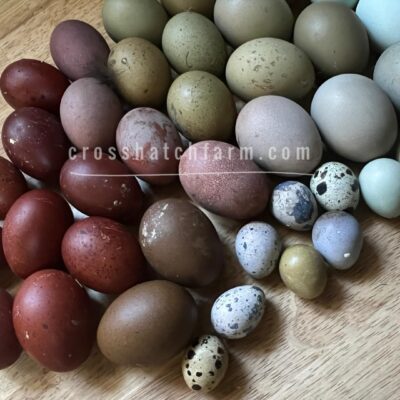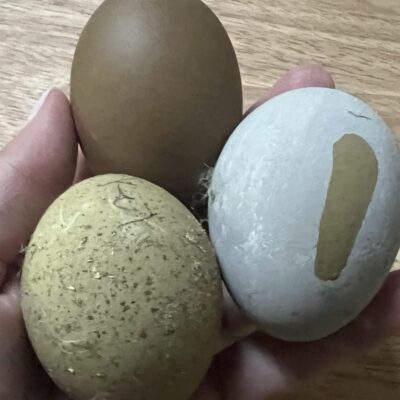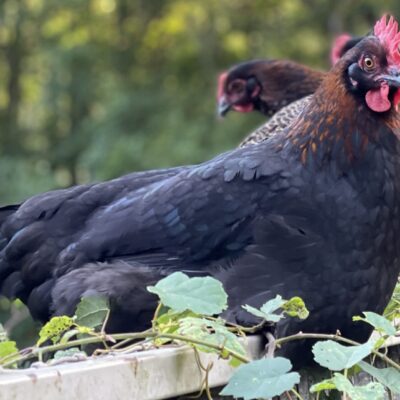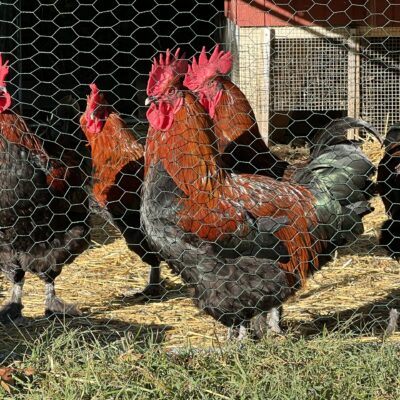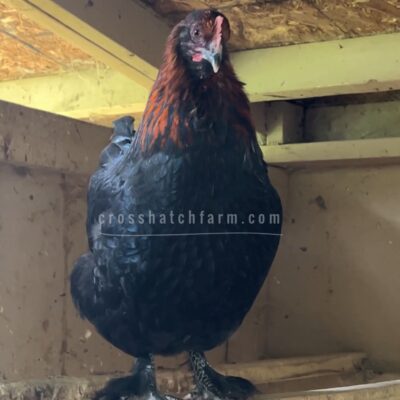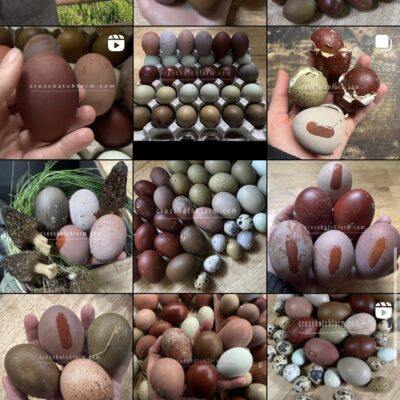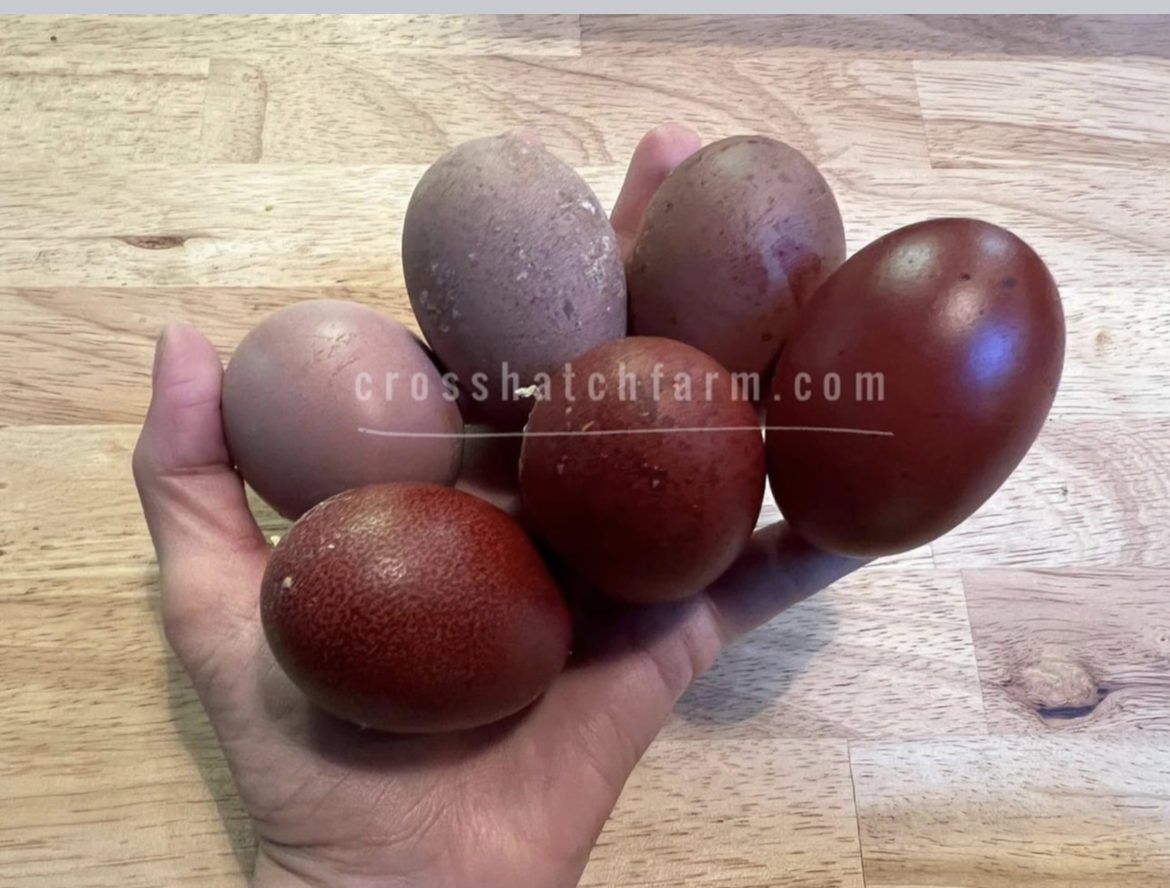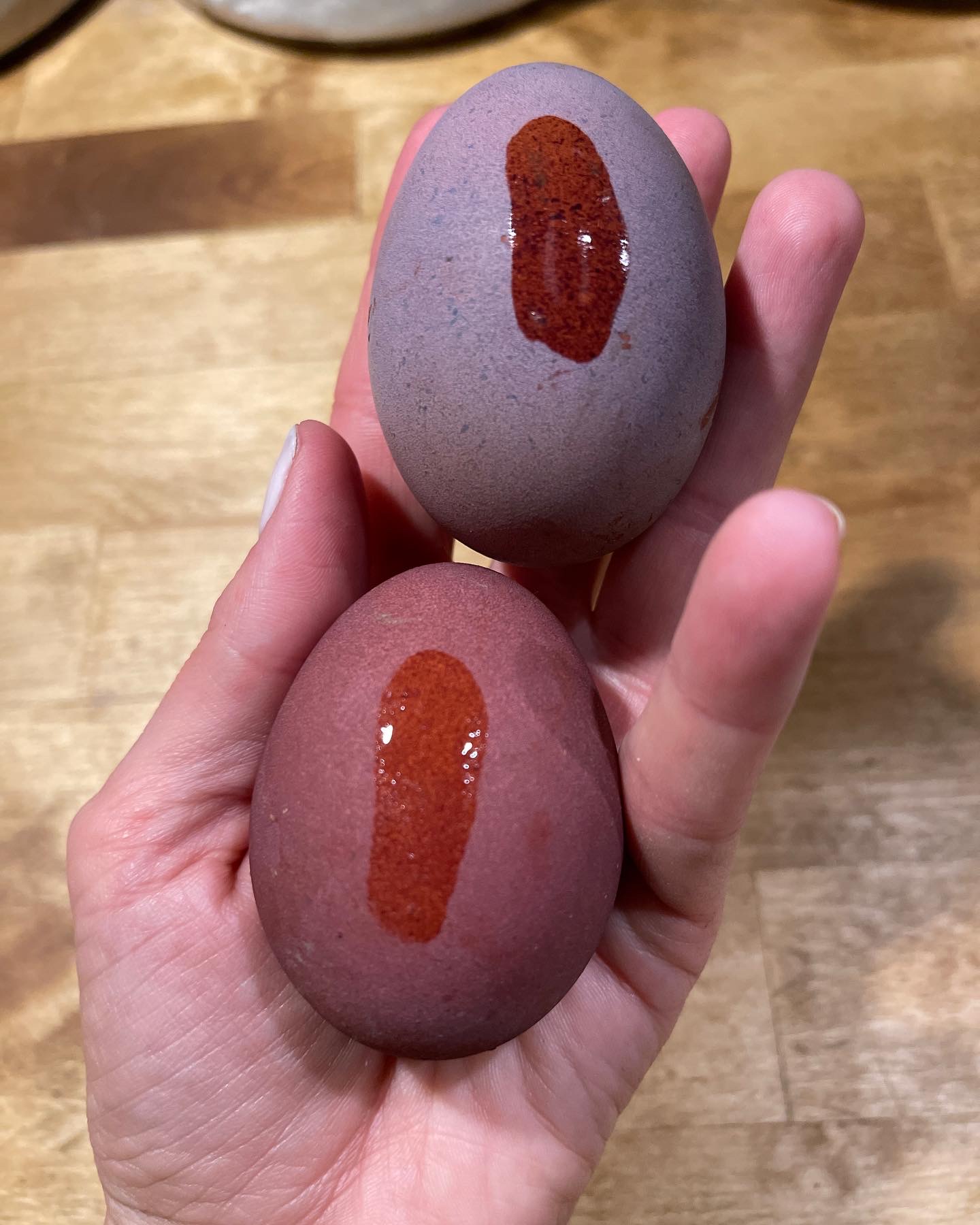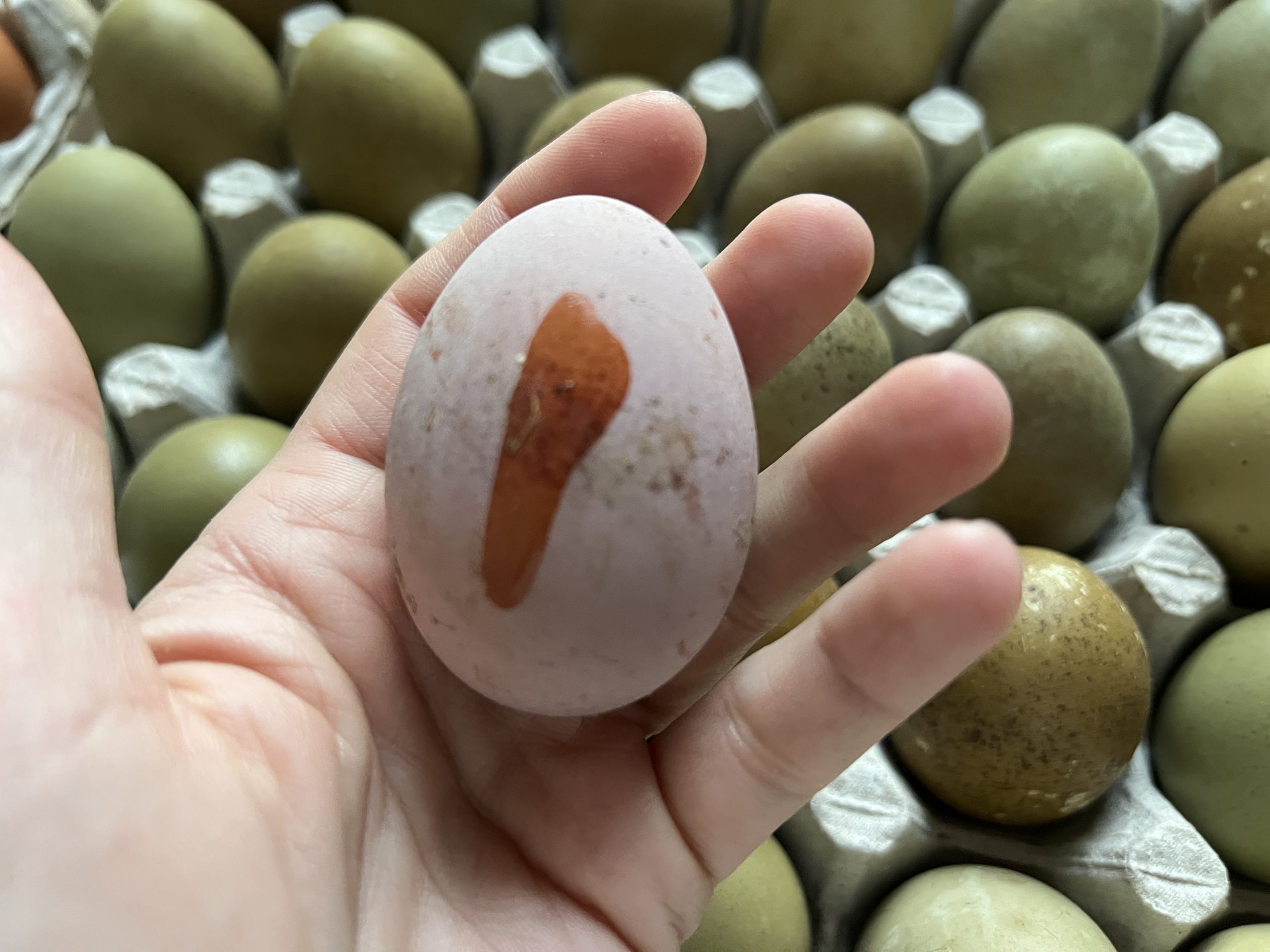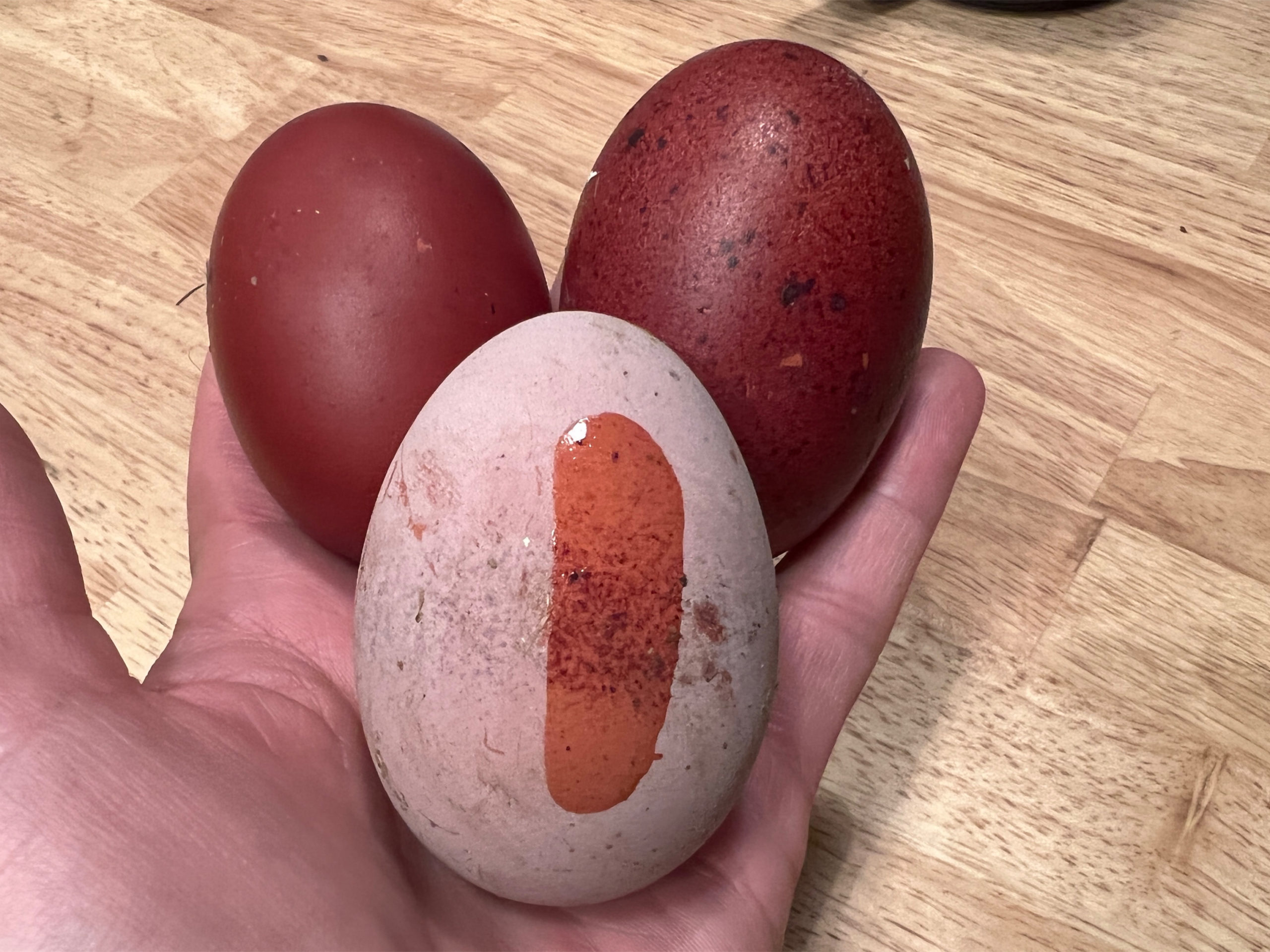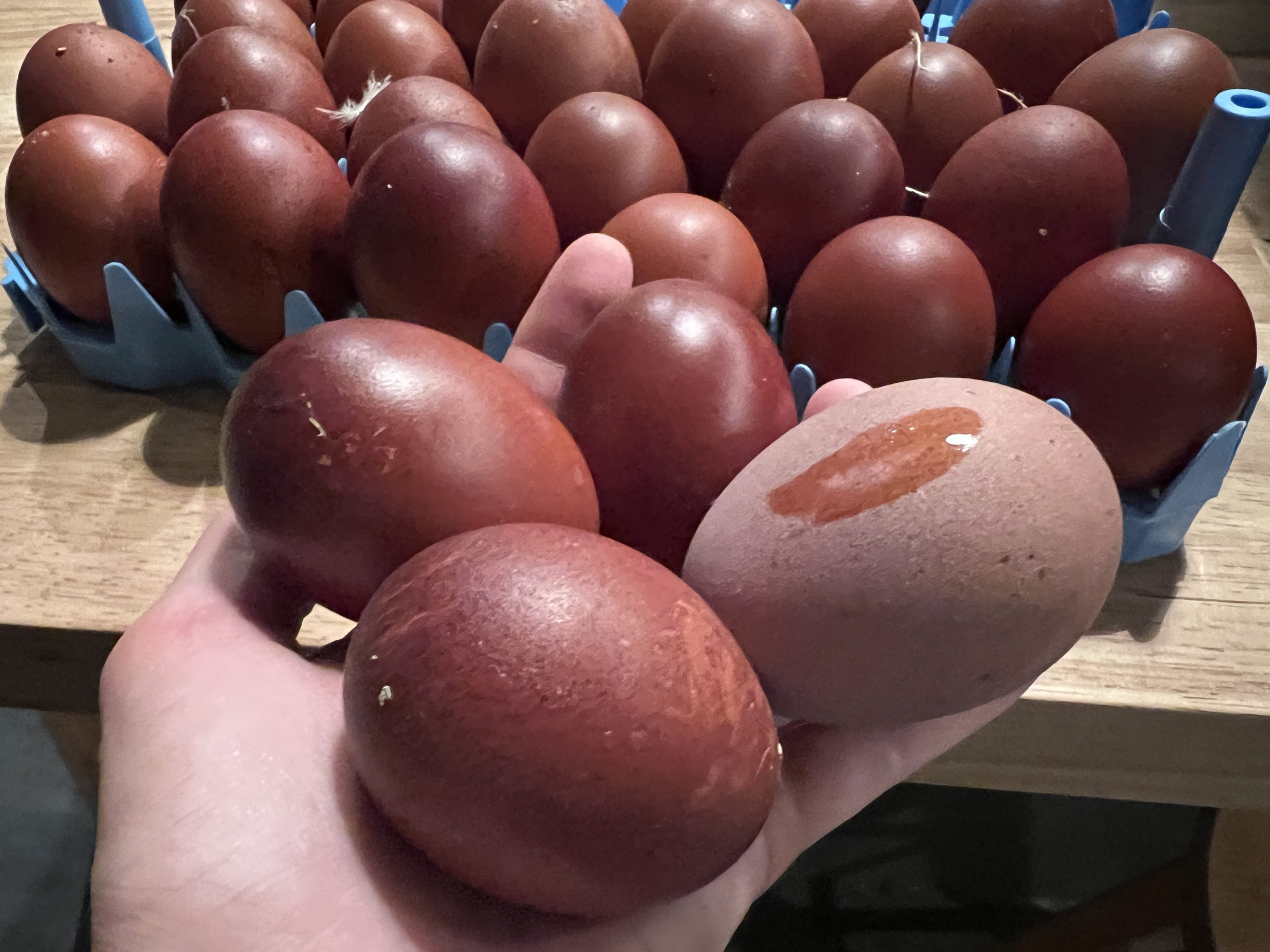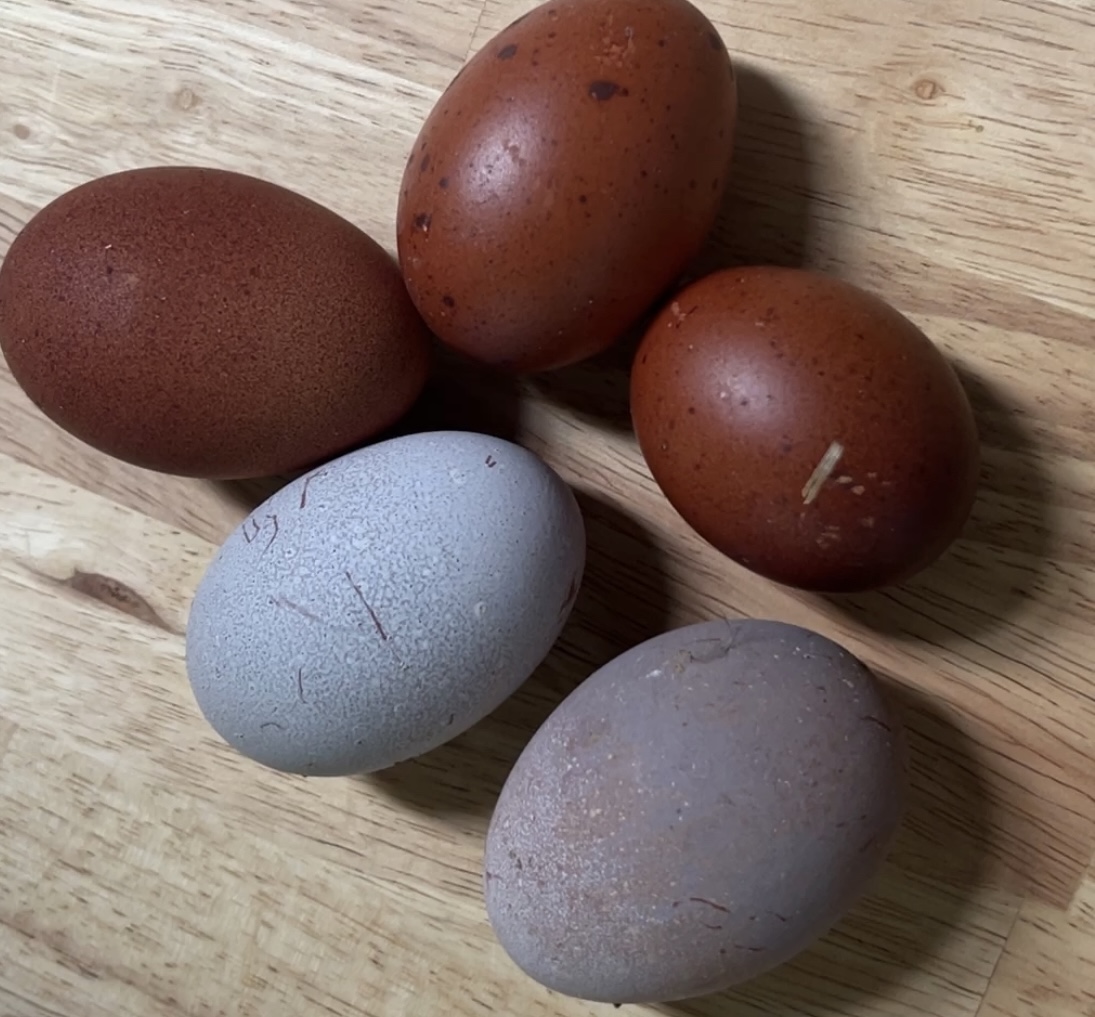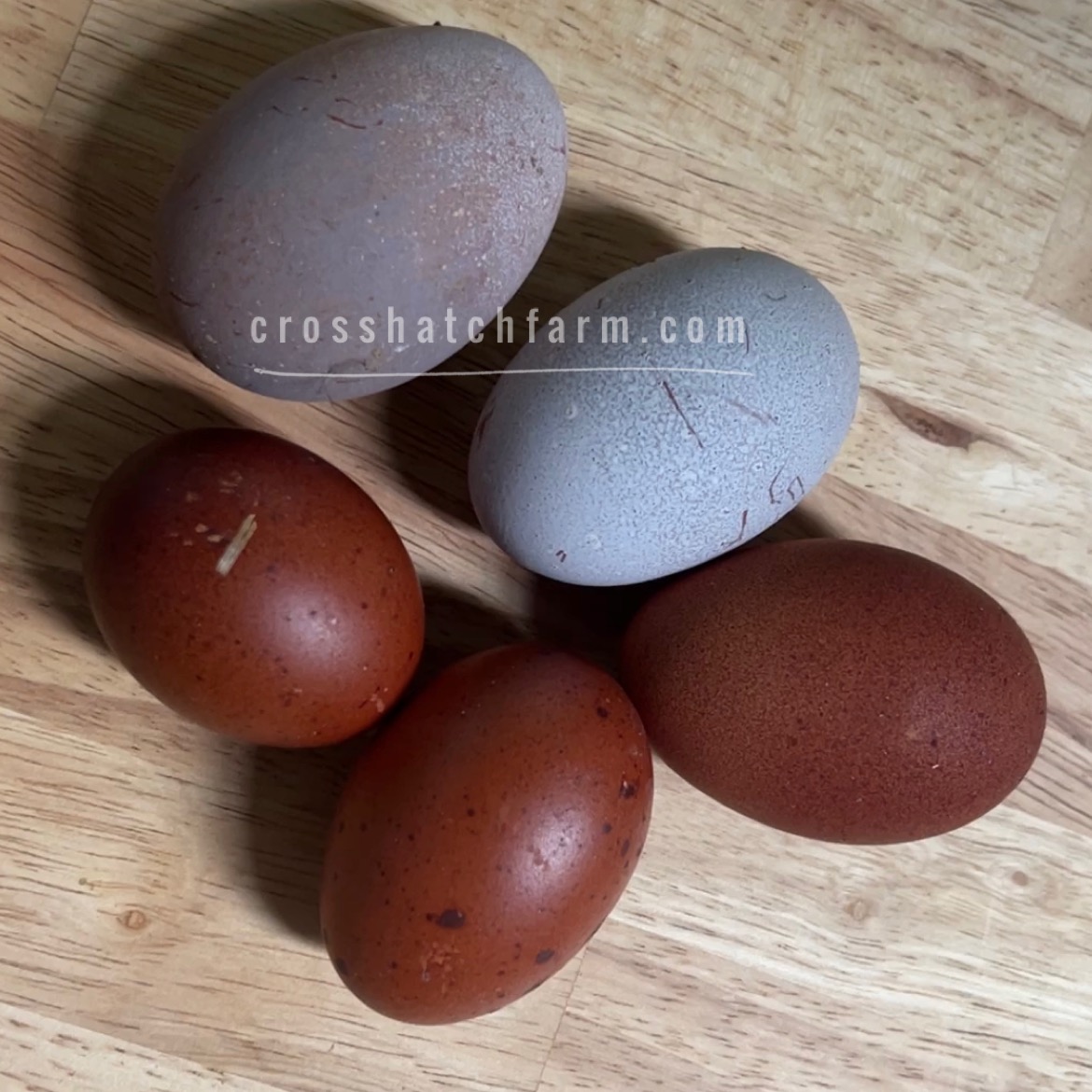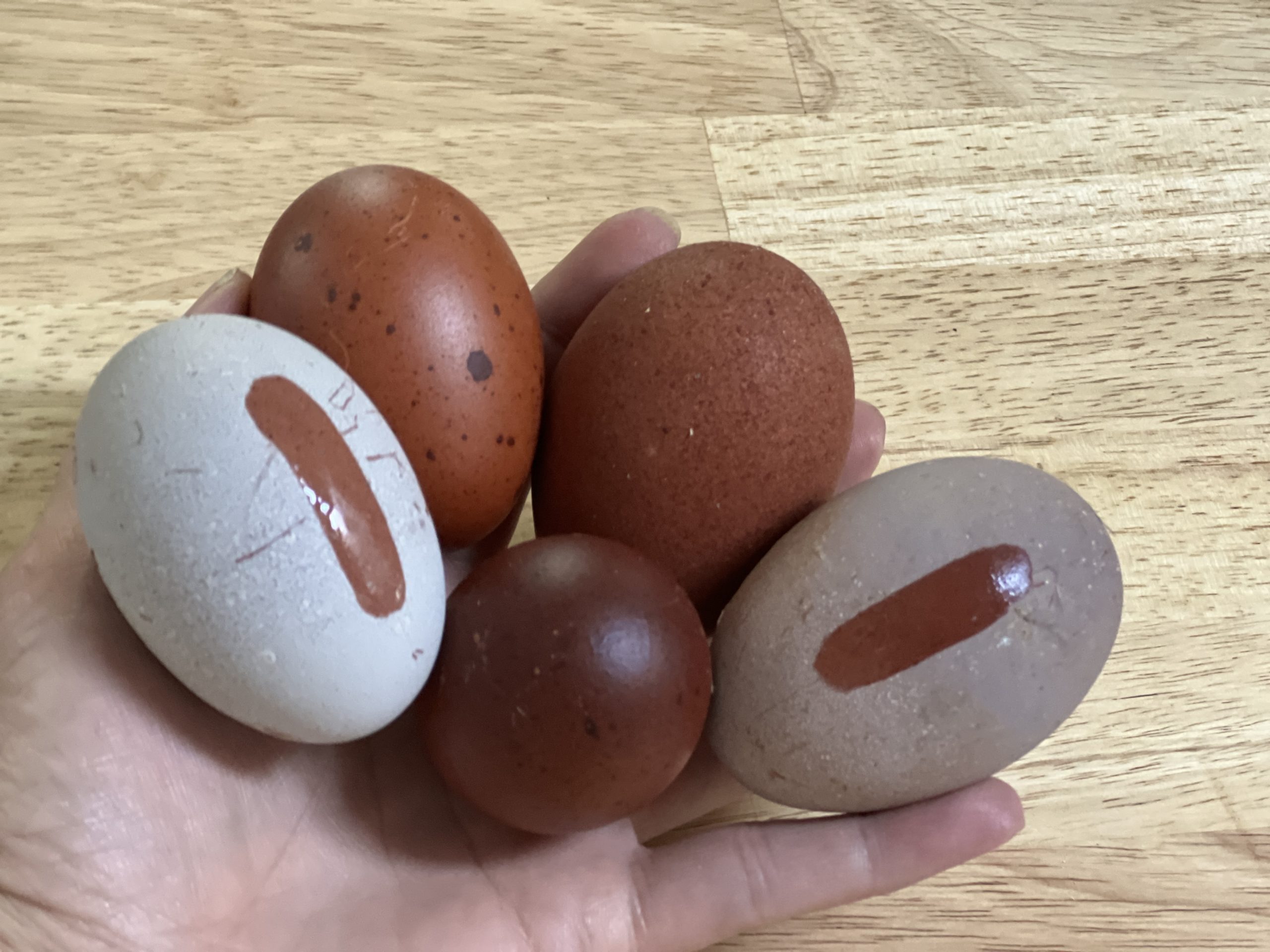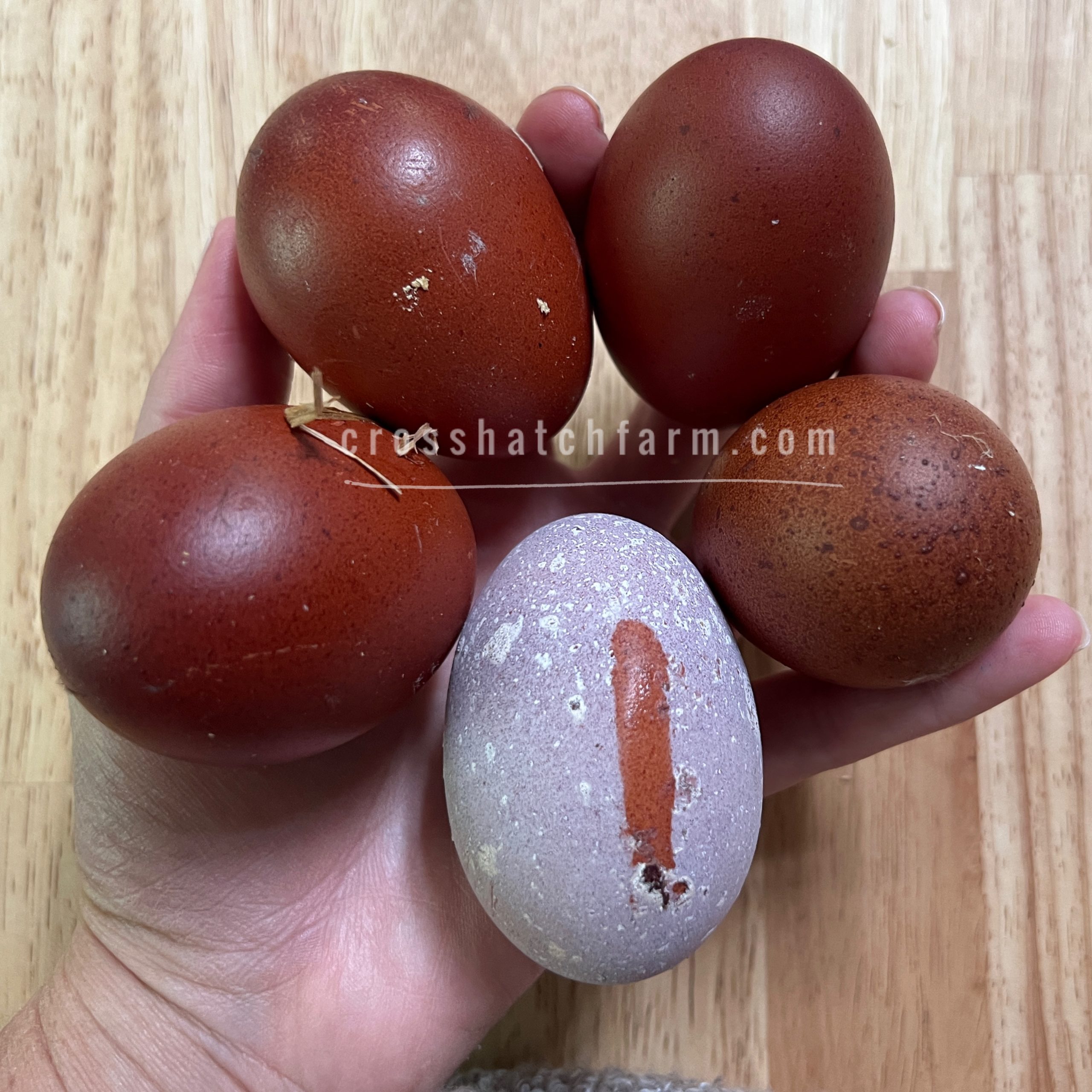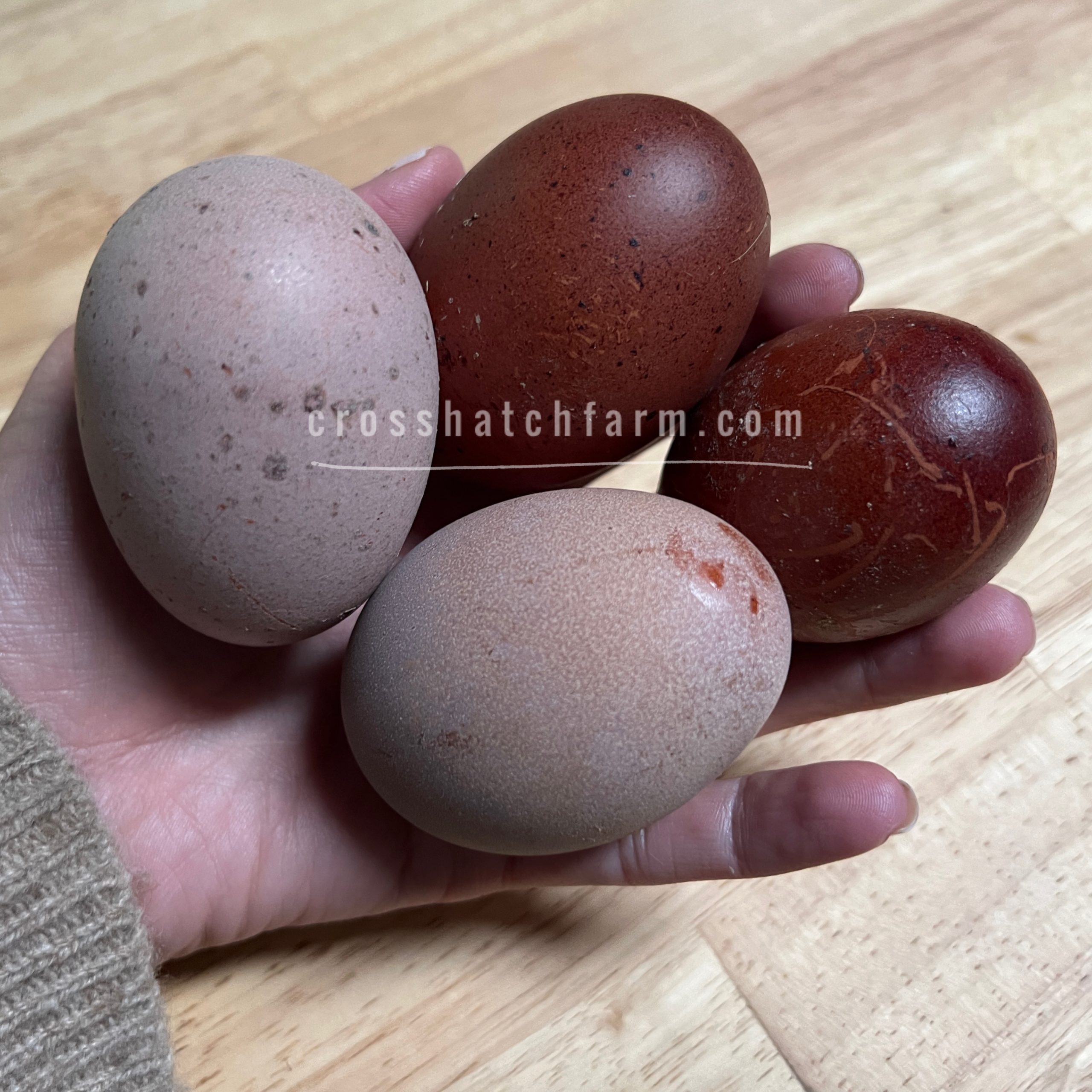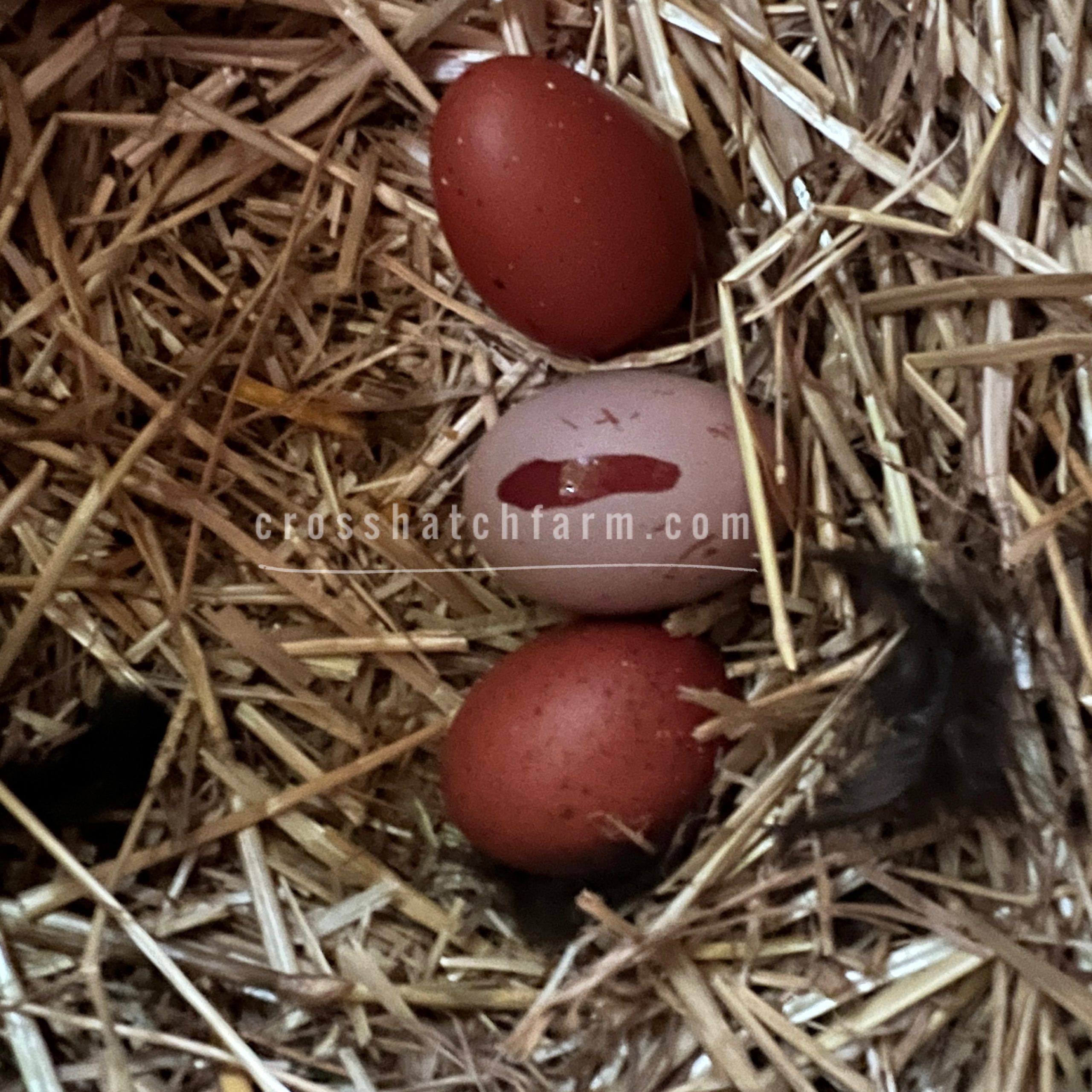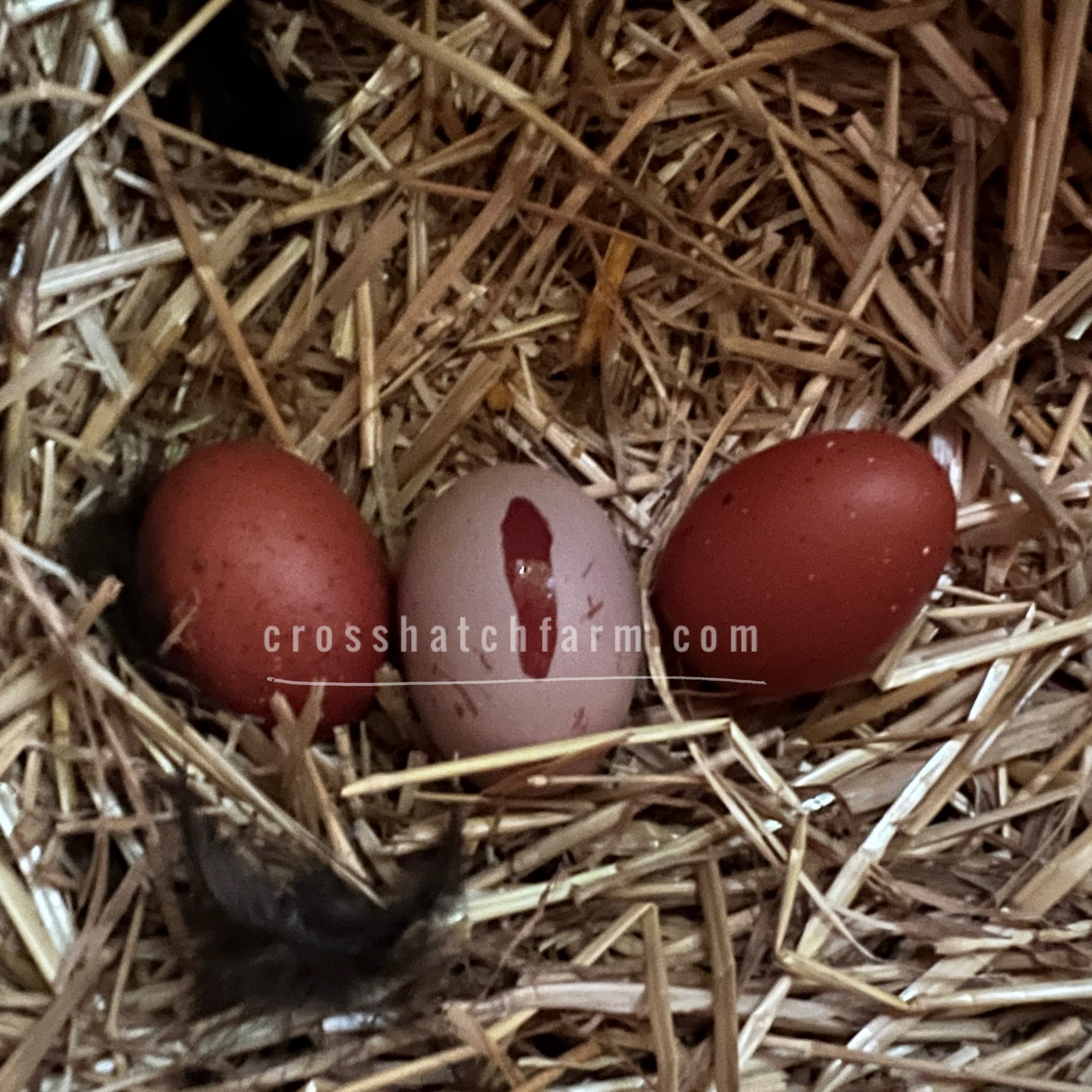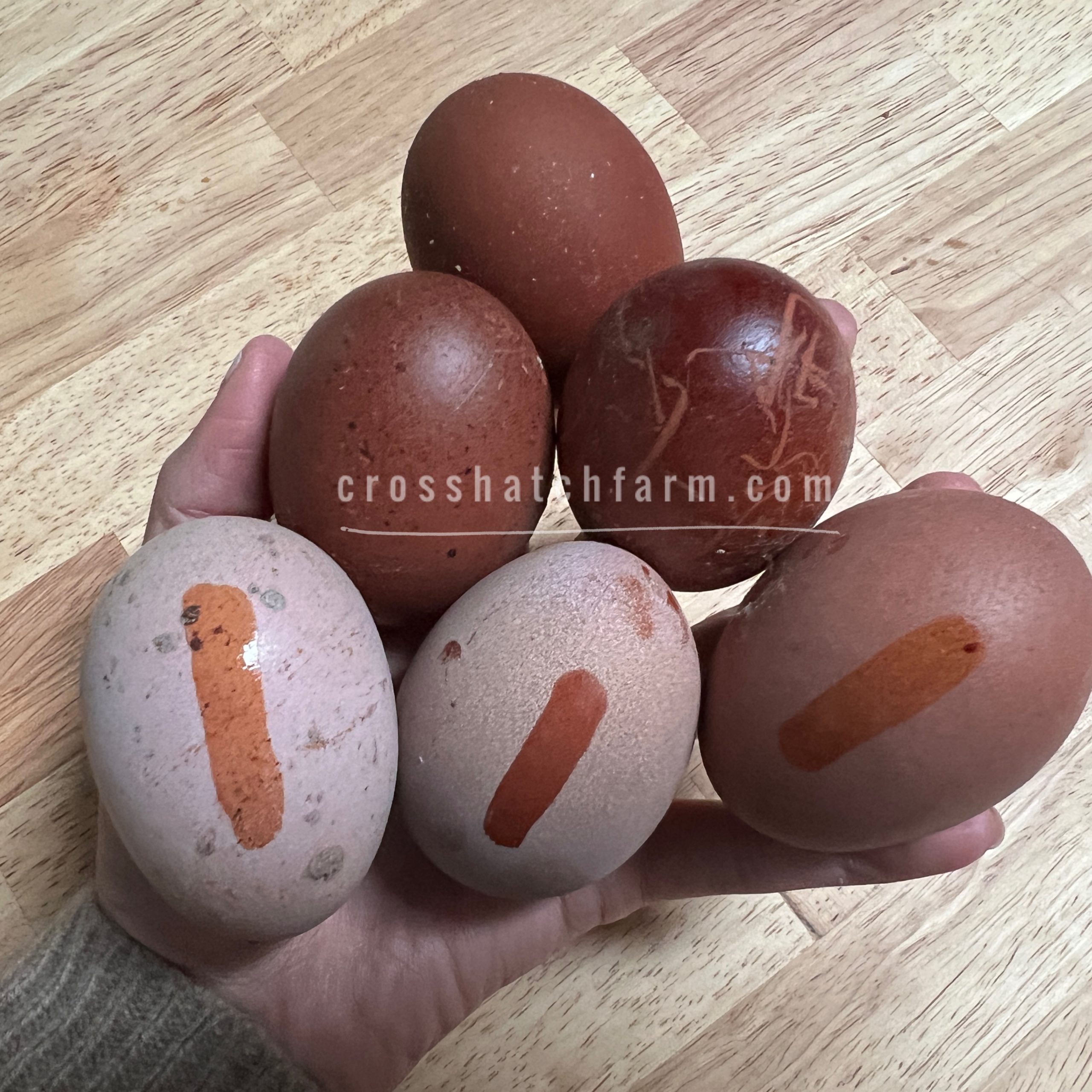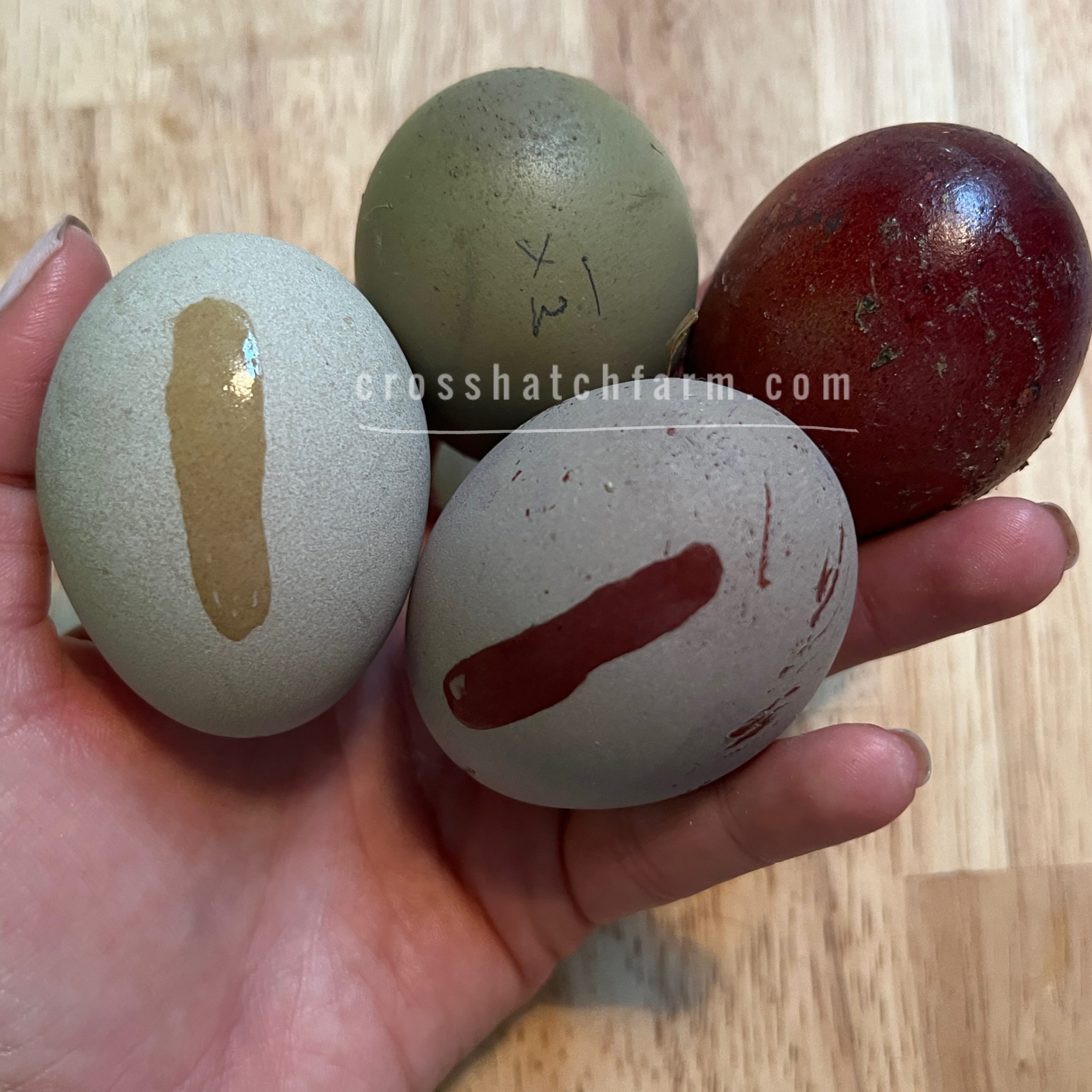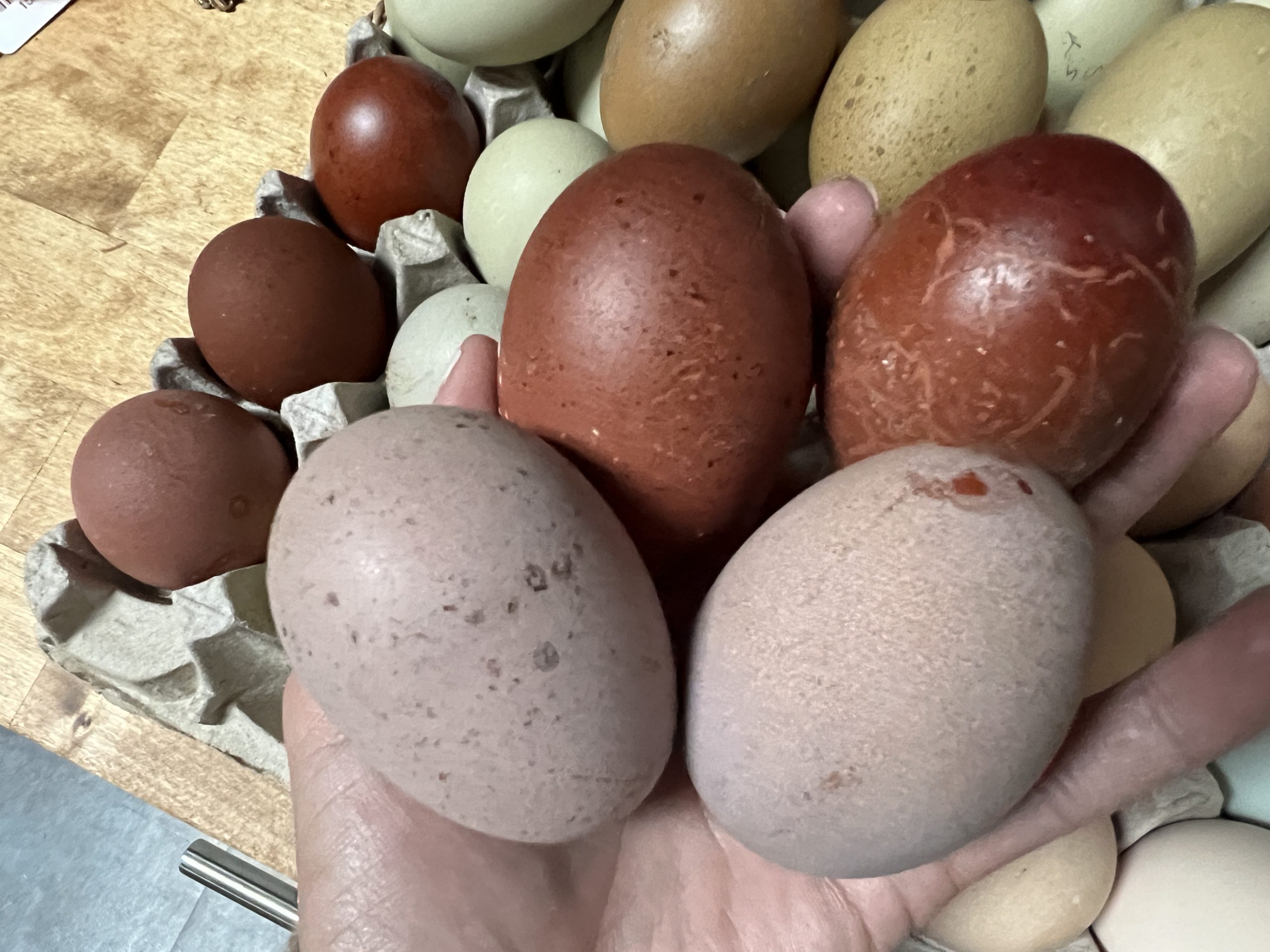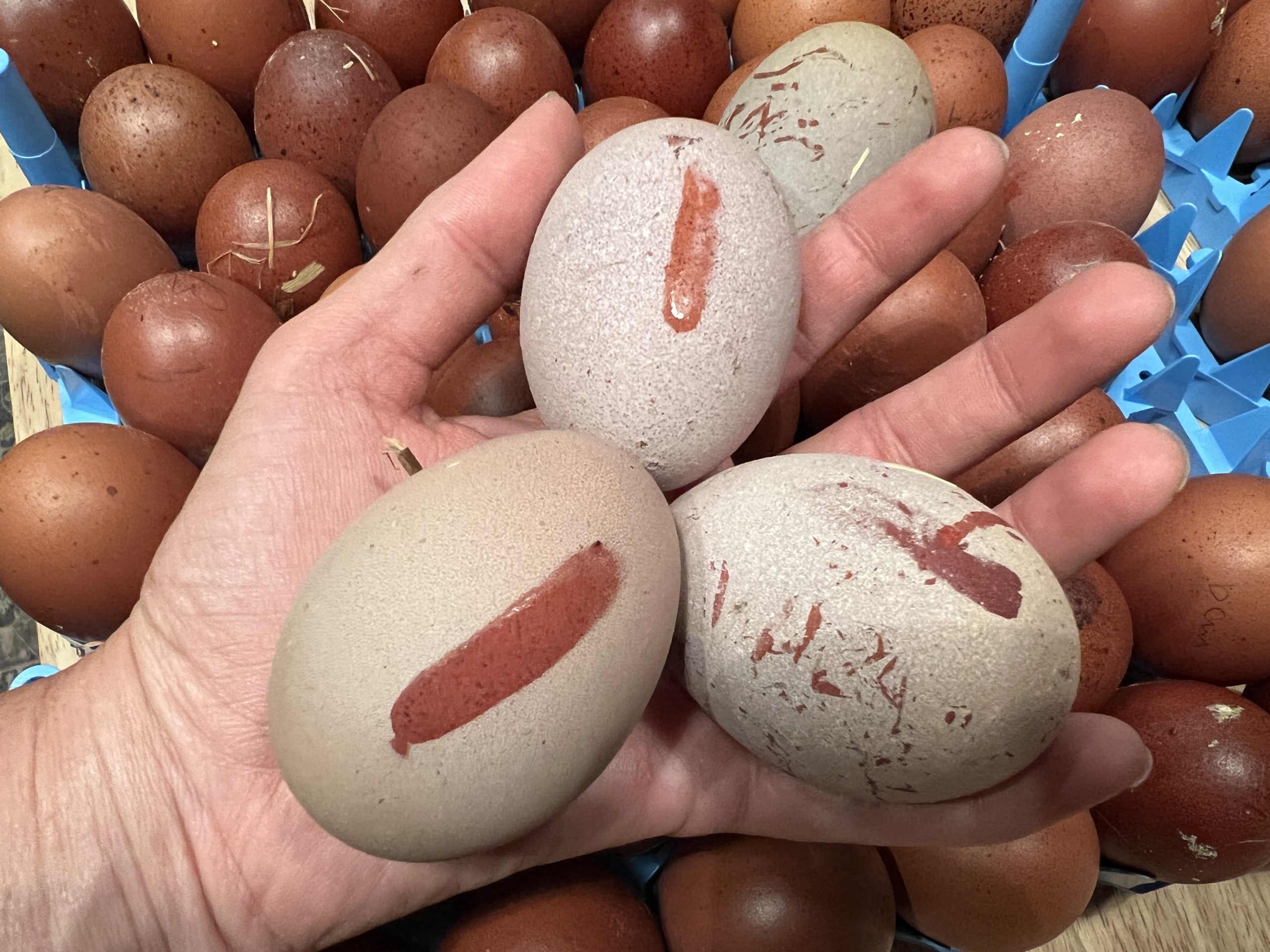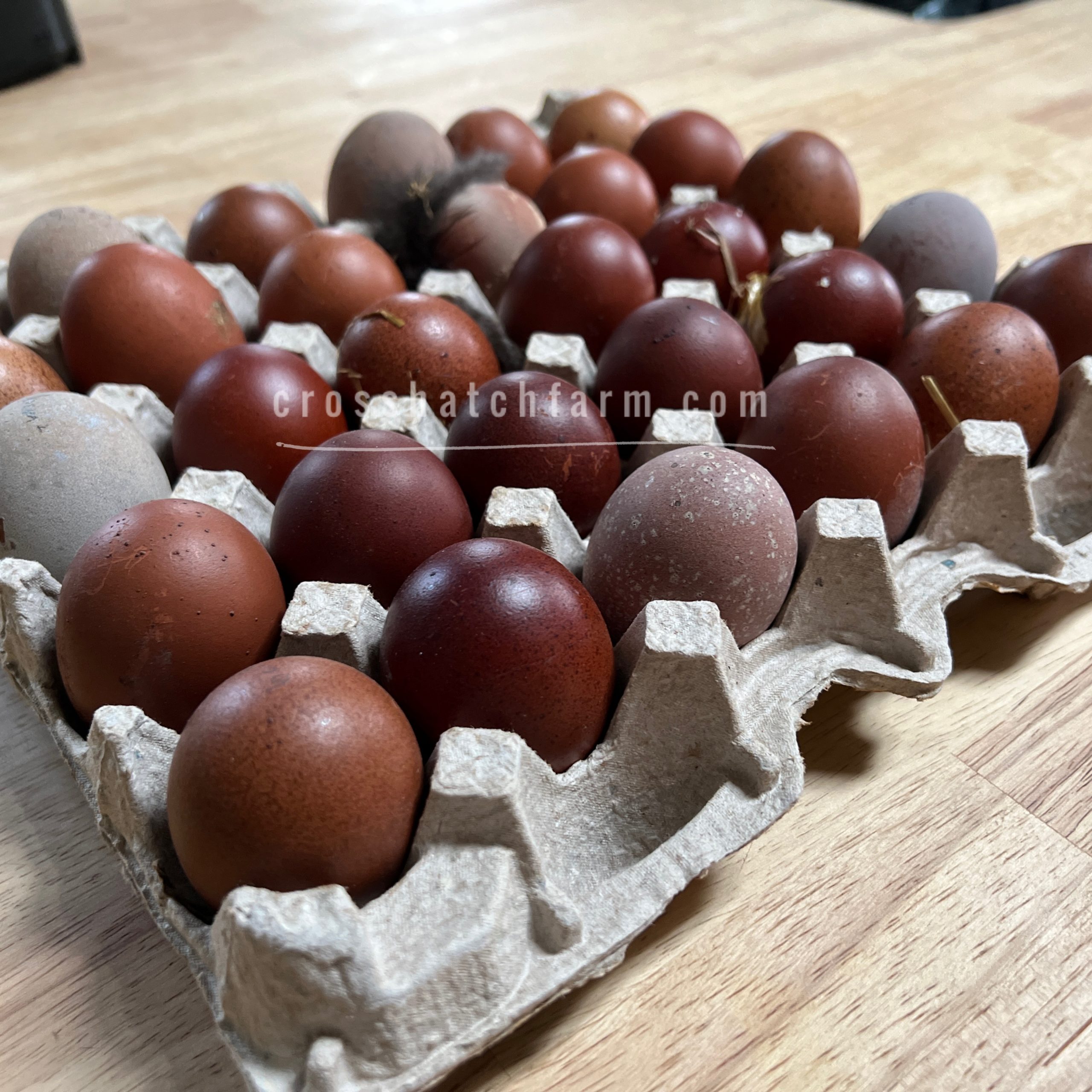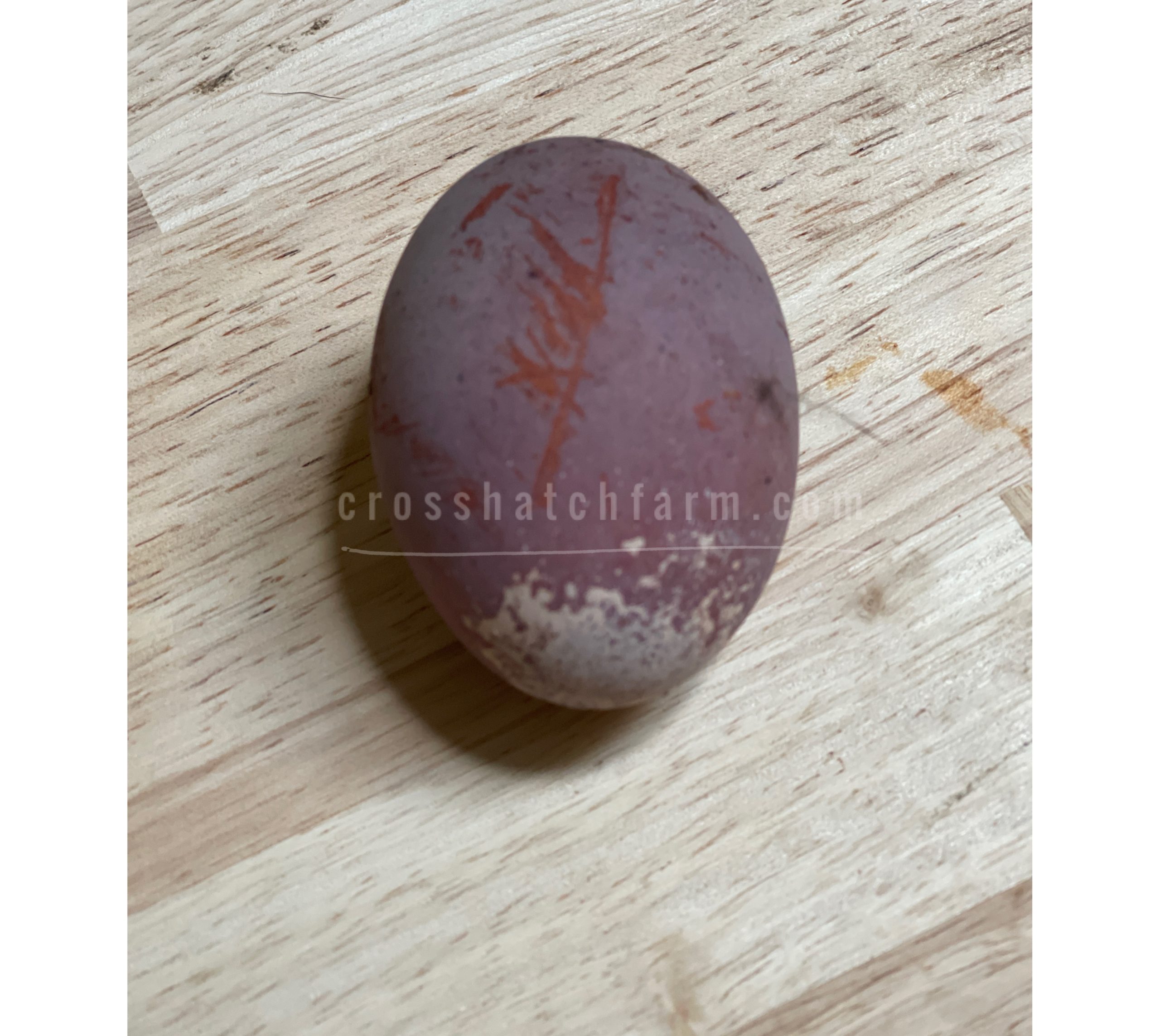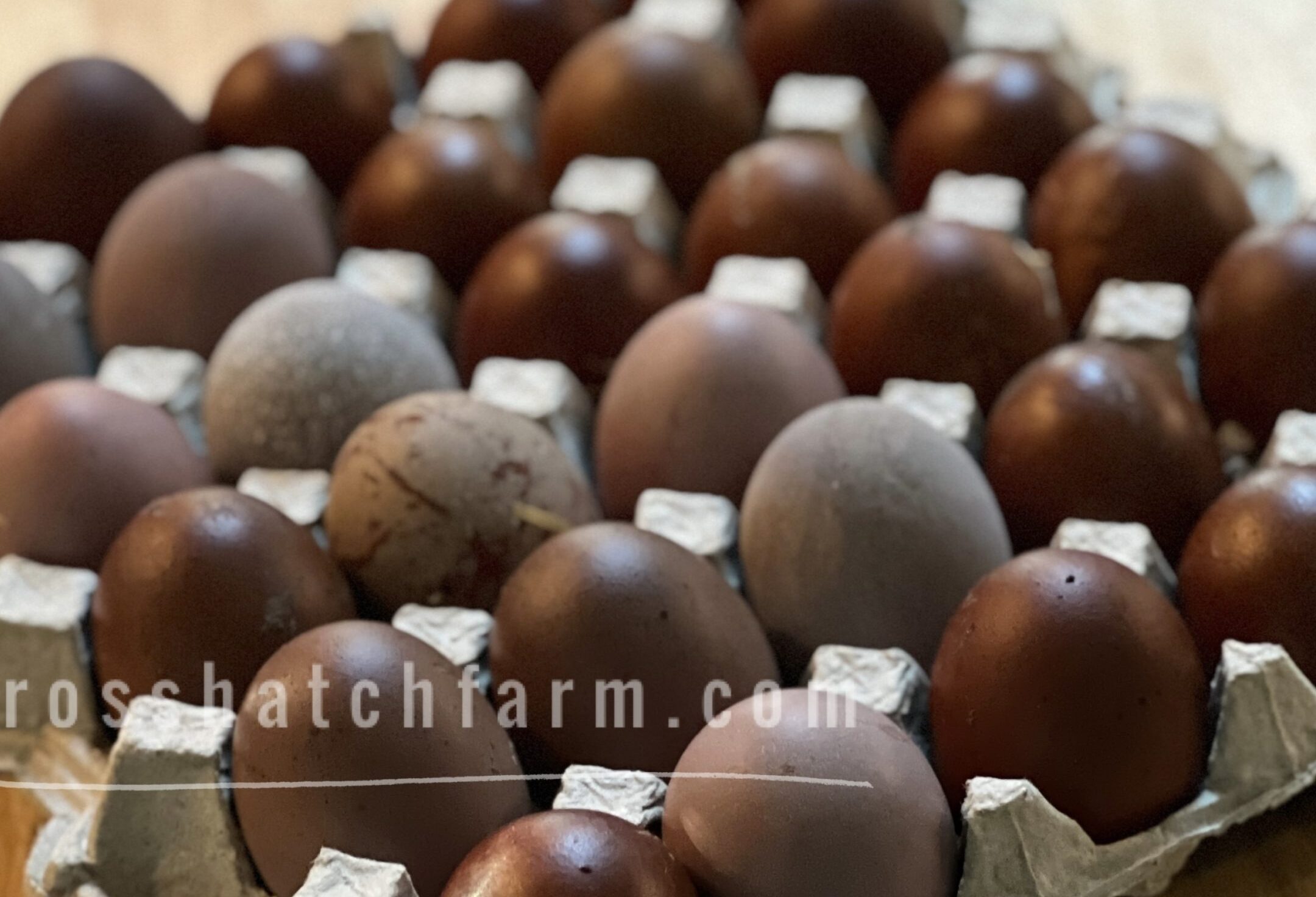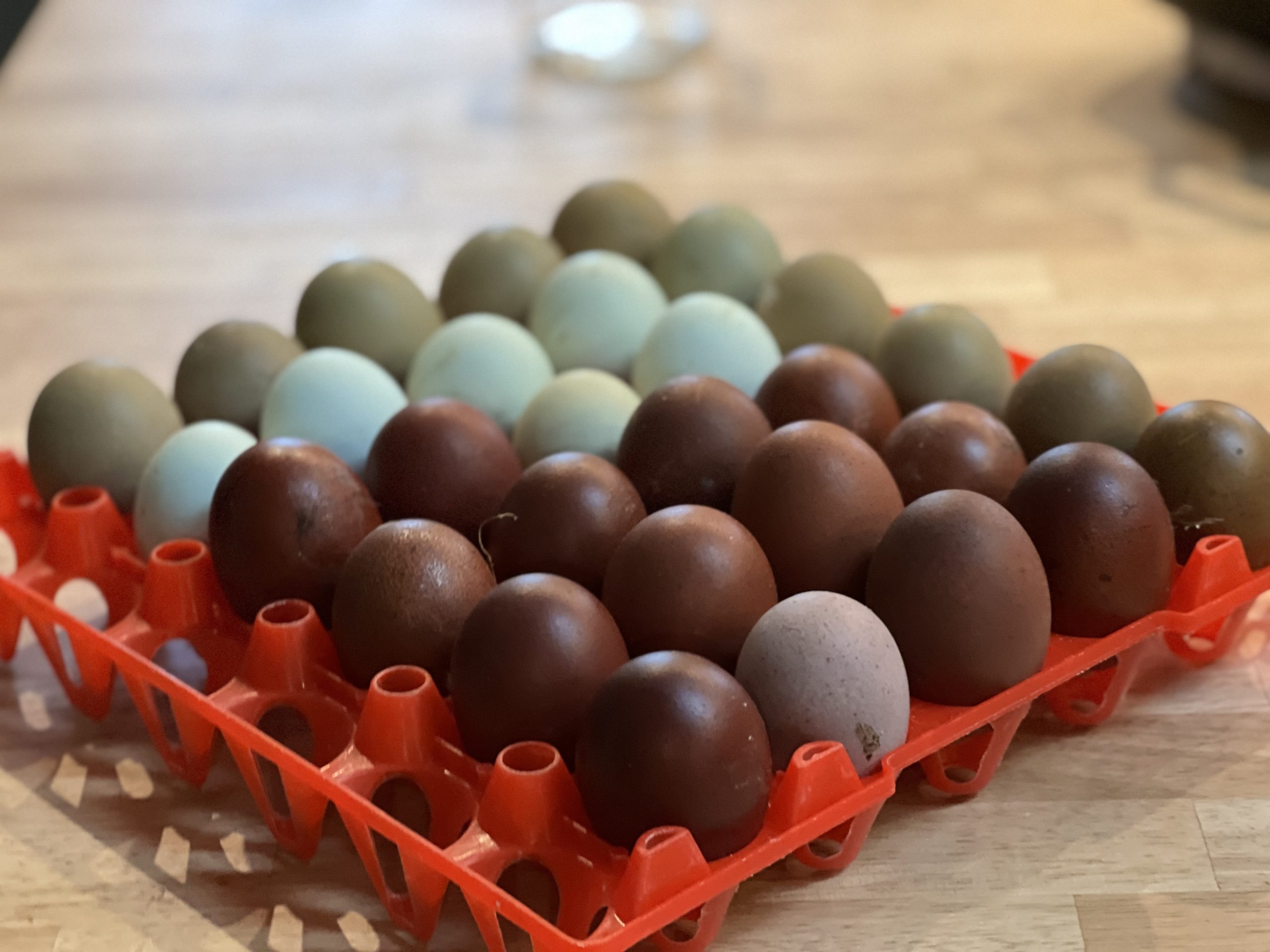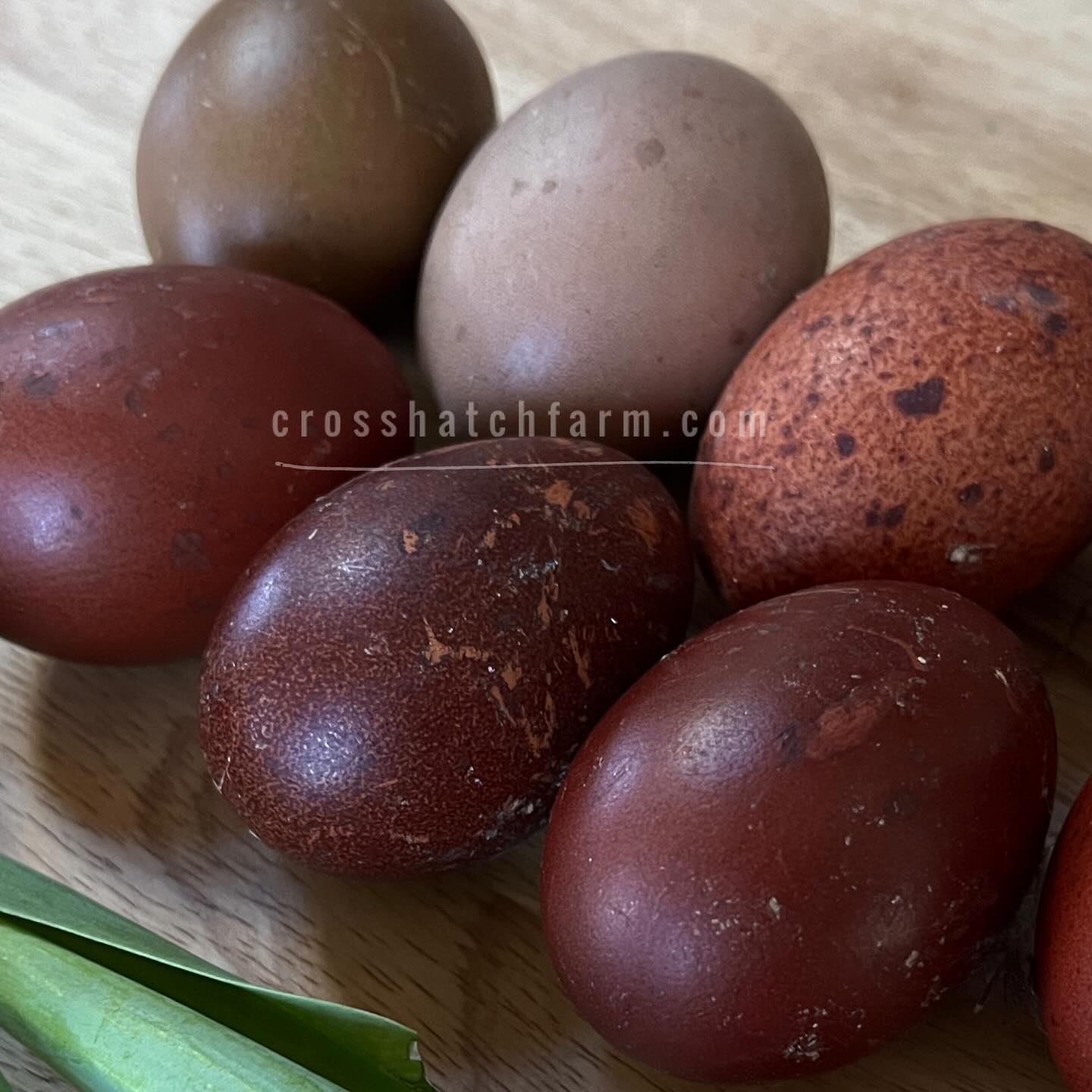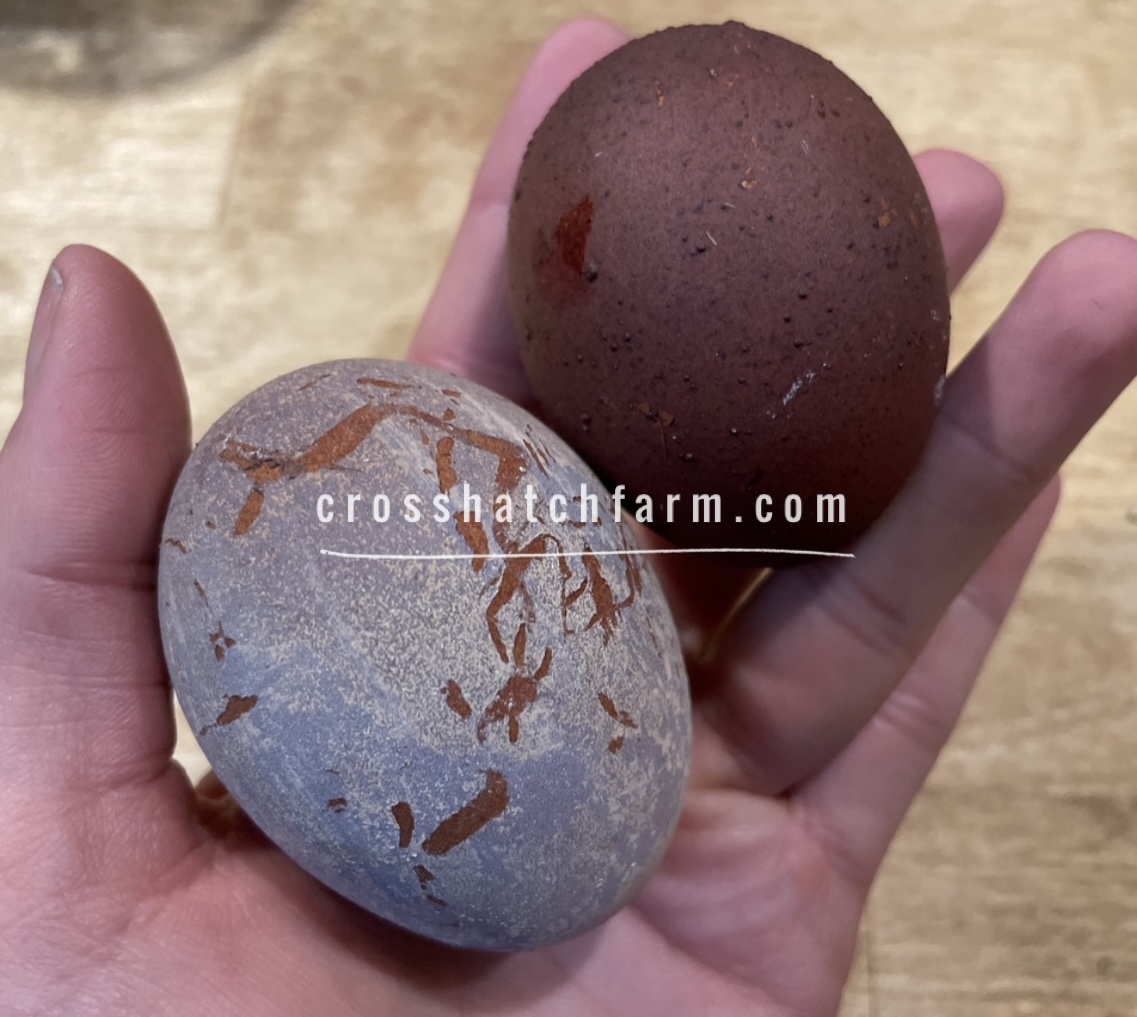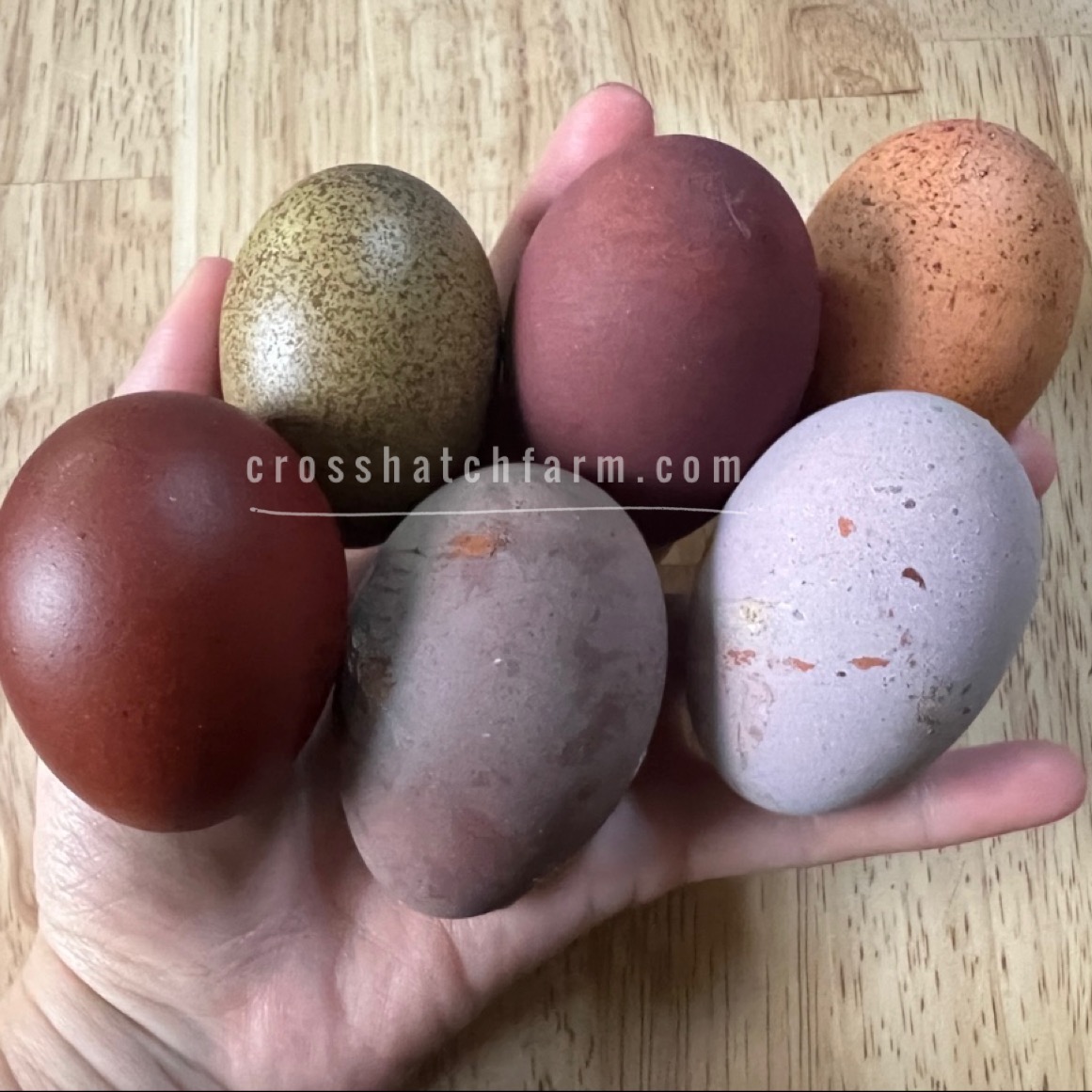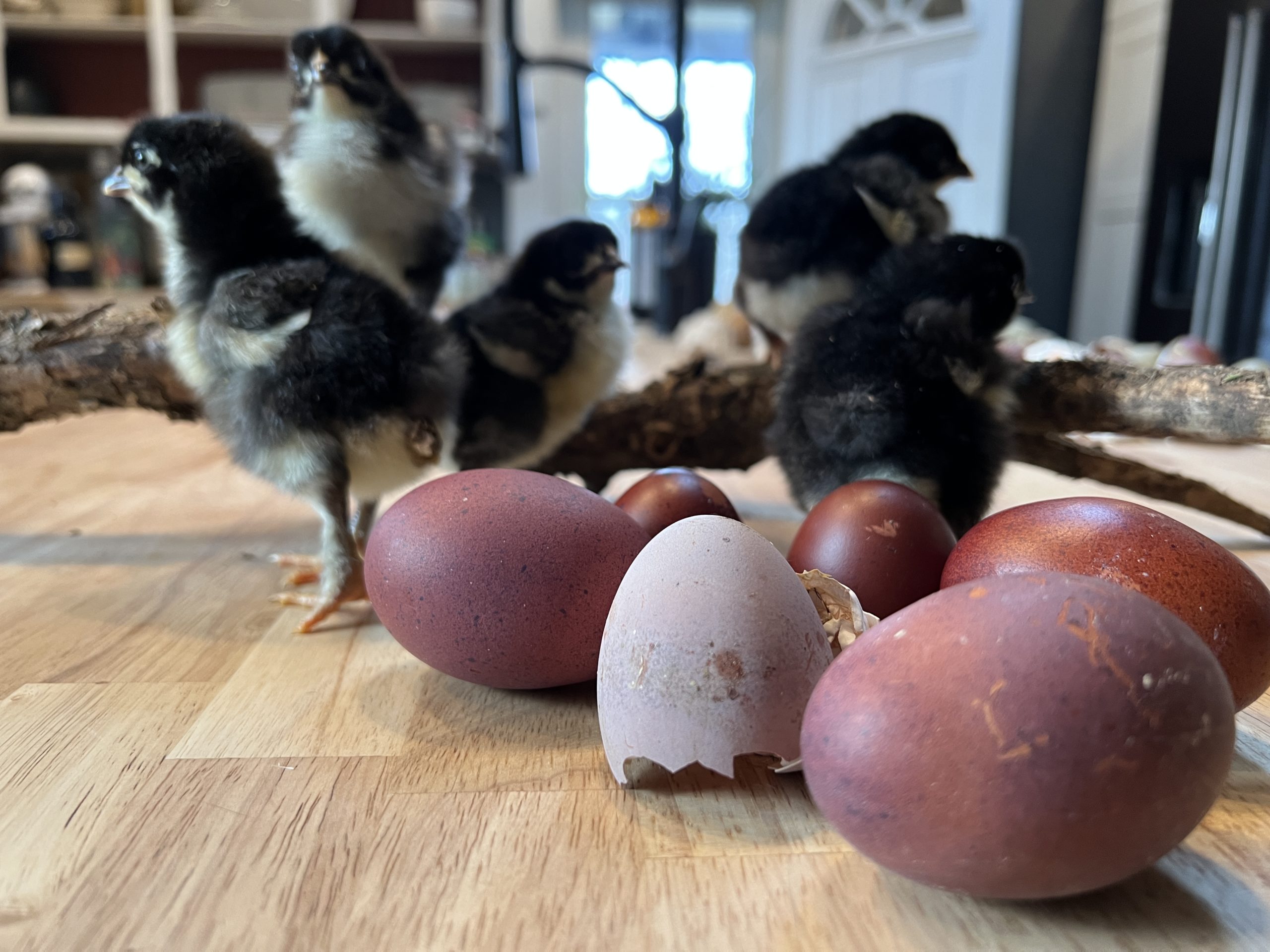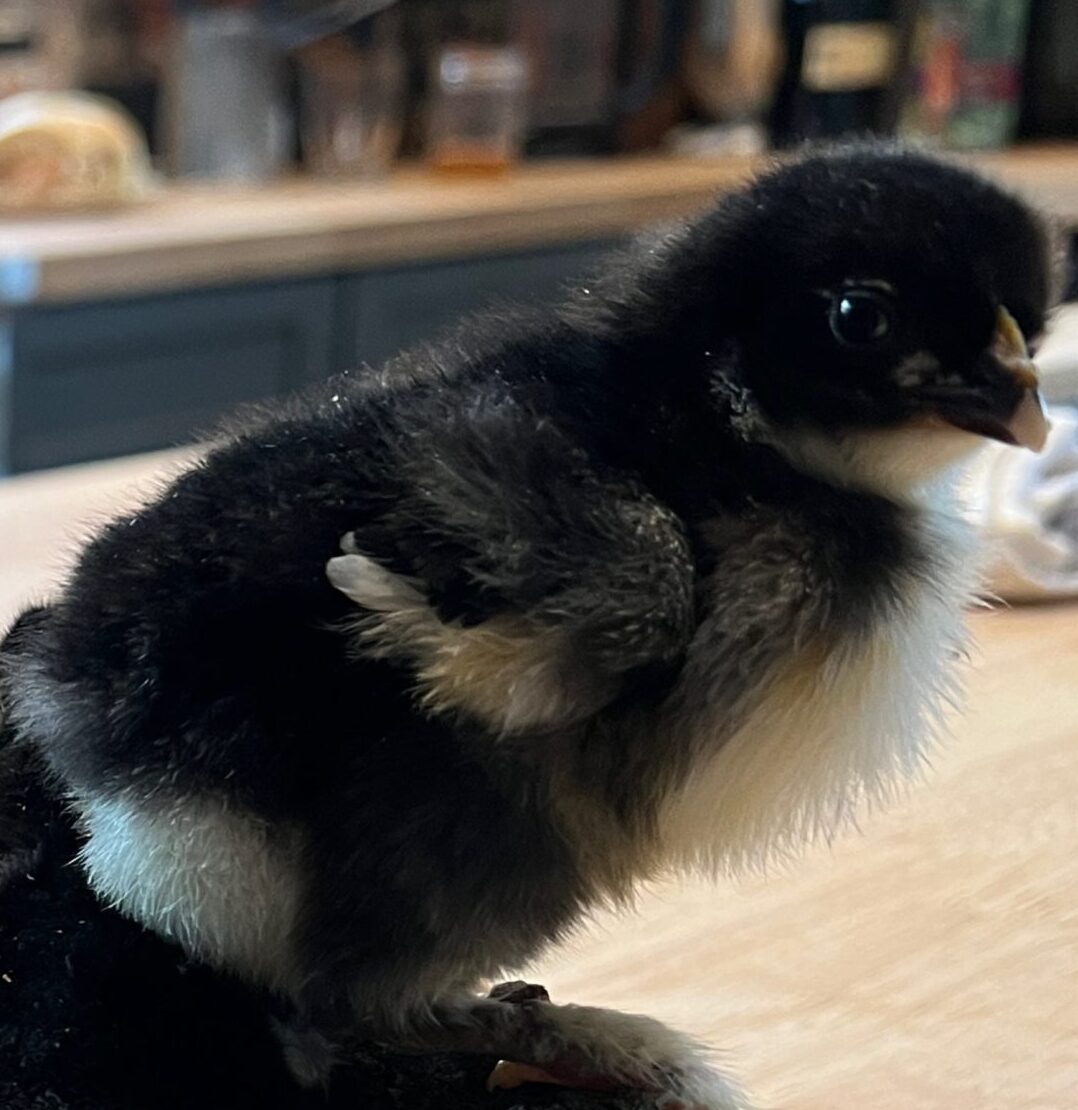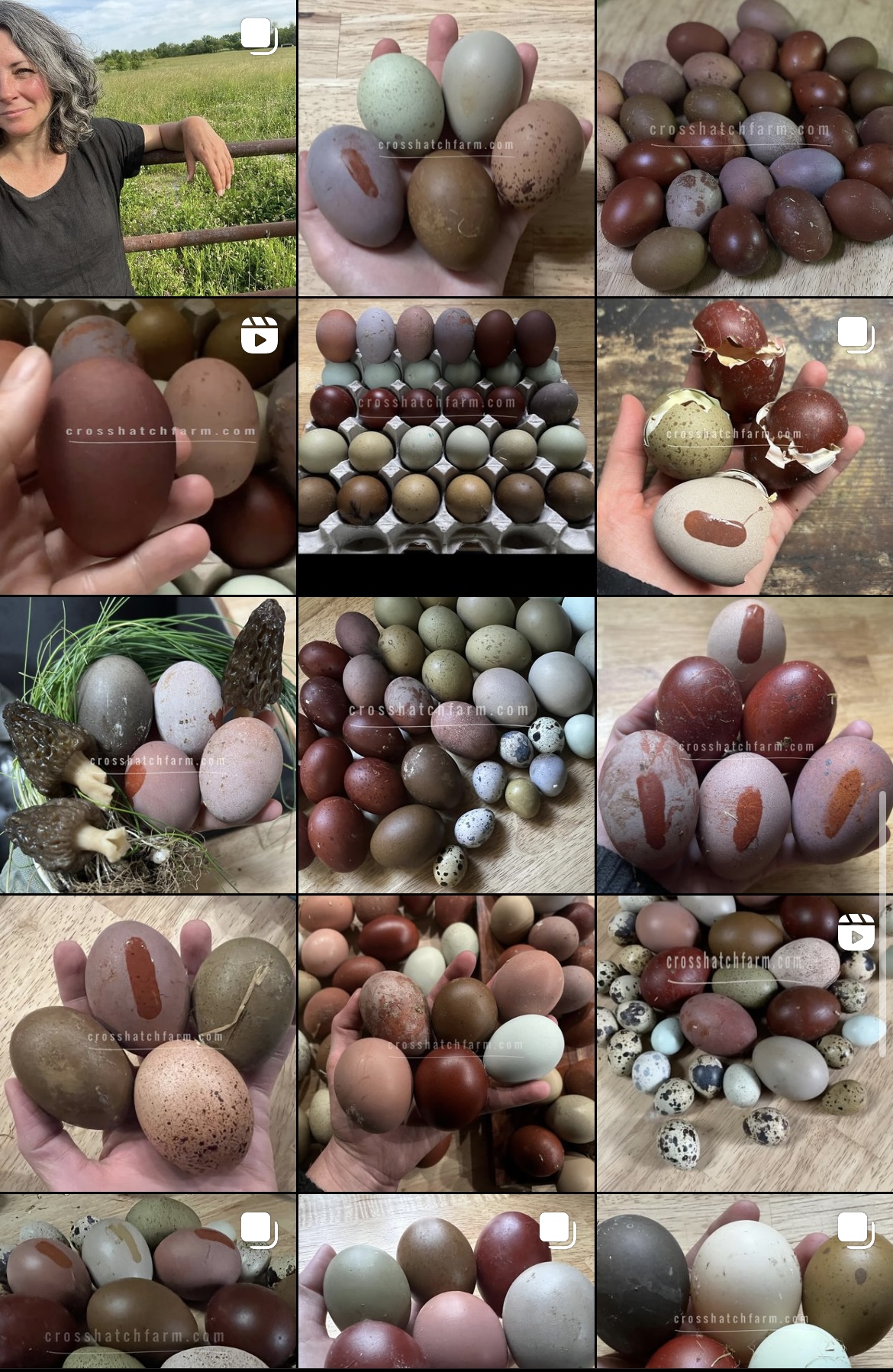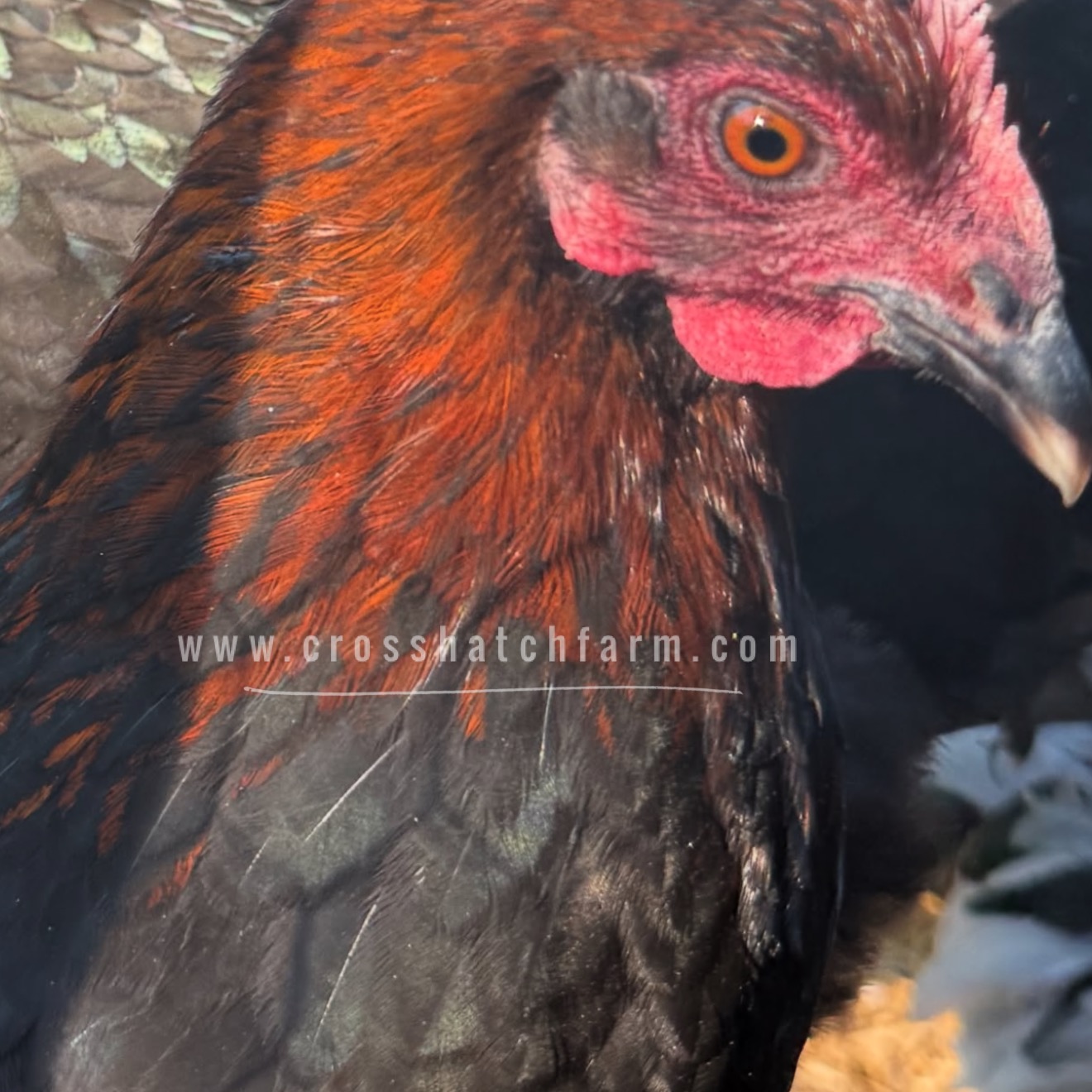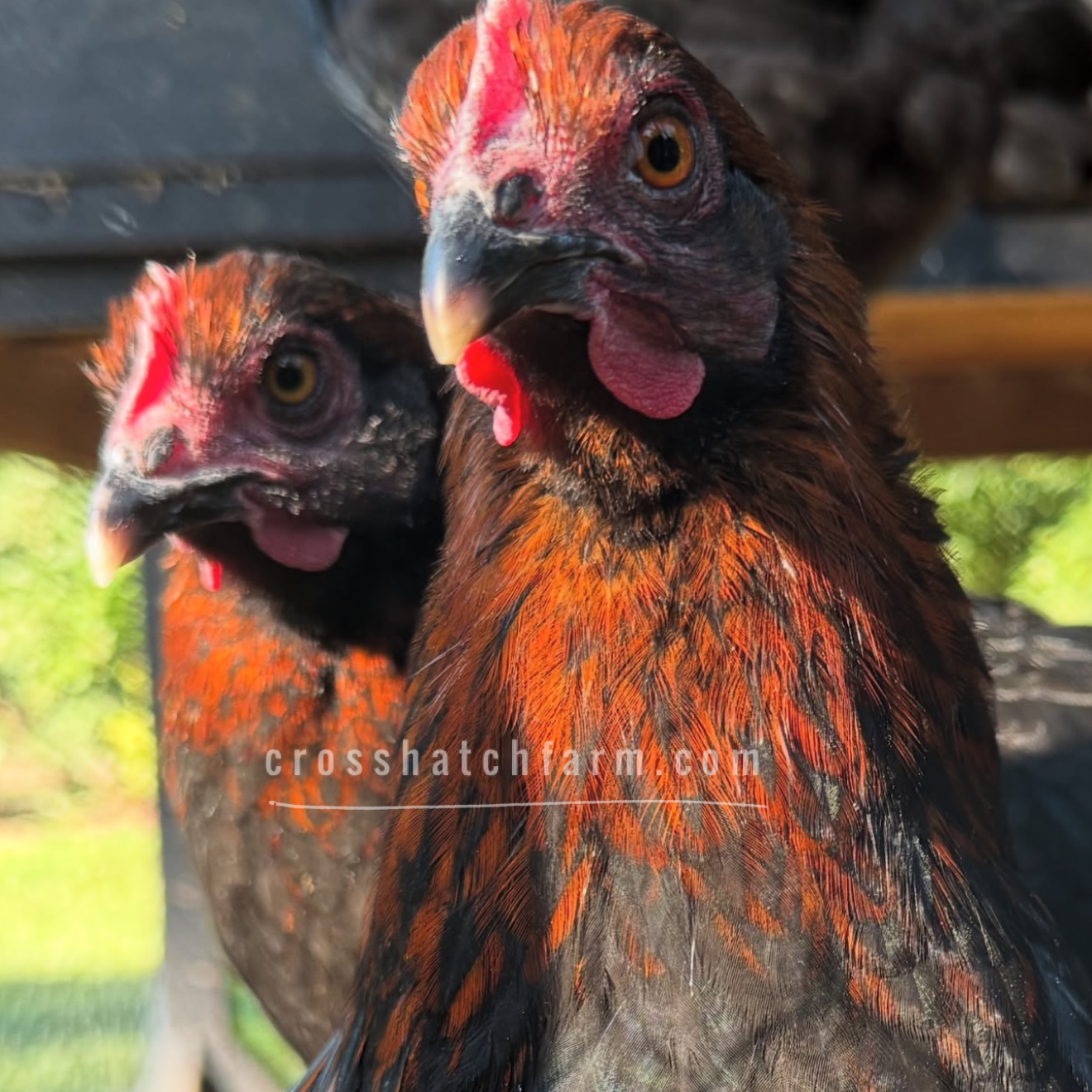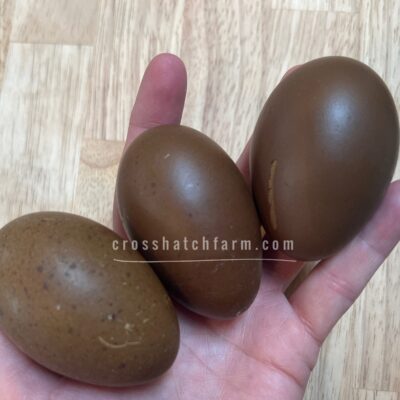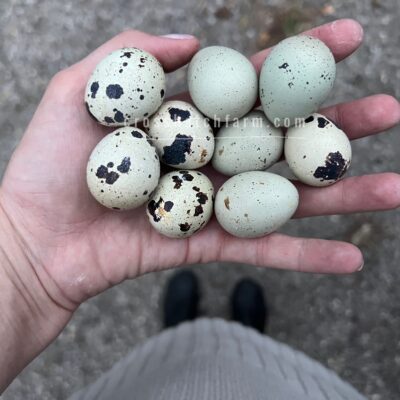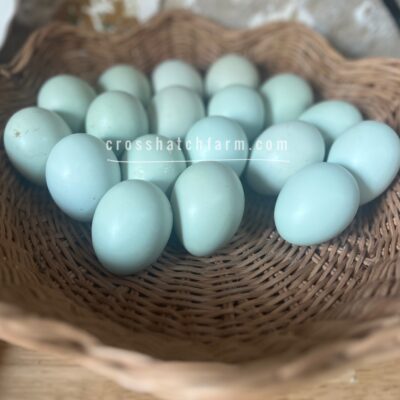Description
Note: We run a highly selective breeding program in order to achieve and maintain the pigmentation in our line. That means we prioritize quality over quantity, and things move slowly over open season. It often takes us a couple months to ship out opening day orders! Please do not purchase Purple Coppers if you are not comfortable being on a substantial waitlist, and remaining flexible on your ship dates. Please also be sure you’ve read our policies. Many thanks!
What is a Purple Copper?
‘Purple Copper’ is the affectionate name our family gave to our pure or standard bred Black Copper Marans that lay eggs with a deep burgundy-purple-red pigmentation and sometimes a heavy bloom that makes the eggs appear lavender, bright periwinkle, deep grape purple, and mauve. The delight a purple egg brings is sort of indescribable, if you are into these rainbow egg basket things.
Our flock is a closed line of quality Black Copper Marans we’ve bred at the redstead over generations in a clan mating program. Between my breeding and the two breeders before me, this line has been kept closed for a decade with no outcrosses. We are highly selective in our breeding program. All of our females are under a male hatched from a heavy bloom purple egg that also made the successive cuts for type and conformation. We breed for the genetics to keep our dark pigmentation and we strive to conform to the SOP in all our breeding choices in type and feathering, though please note that bloom is not considered standard for Marans eggs.
Will all my hens lay purple eggs? Can you give me all hens that will lay a 9?
Nope and nope. This line carries the genetic propensity for richly pigmented eggs, with a particular burgundy red to plum undertone to the pigment. (Some lines of Marans have an orangish terracotta or milk chocolate undertone to their Marans eggs, we select away from the brown tones and toward the reds which tend to have more drama.)
This line also carries the genetic tendency towards heavy bloom, which is what makes our eggs appear purple, periwinkle, and mauve. More on that below.
We are running 8 separate pens of Purple Coppers in 2026, which is our very best males over our very best females. The hens and males in our program hatched from our darkest and most bloom-worthy eggs, and as the next generation grows out from our late Winter hatches we select our ‘keepers’ by their type and conformation across their first molts. Males and females are then paired to complement each other through a spiral or clan mating breeding scheme.
Some of the offspring will lay as dark and as bloomy as their parents, but not all offspring from the same pairing will lay as dark as their parents. There are many genes and modifiers that play a role in egg pigmentation, and bloom isn’t totally understood. Each chick is a new combination of genetics, each chick is a genetic roll of the dice.
Pro tips: You can lose egg color faster than you can maintain it. Breeding is a seasonal cycle, with ebbs and flows, gains and losses. You have to be willing to cull the dull layers, and keep and breed only your darkest or most heavily bloomed layers forward. From there, you have to choose birds that conform to the standard of perfection for Black Copper Marans, or they are just interesting layers and not Marans at all. Do not plan to sell birds in your first year, after one purchase of foundation stock. Be selfish and hatch chick for yourself: Plan to build your line over 1 to 3 years, breeding only your best forward. I send you my best from a highly selective closed line— some you will keep, some you will cull.
Advanced pro-tip! Don’t outcross this line of Marans with another line, or you just may lose the benefit of ten years of selection pressure! We have enough genetic diversity across our pens that you can successfully do a first pairing of your best male and females together to secure your genetic foundation. From there, the sky is the limit. Once you pair a male and female with intent and raise that offspring for breeding, the resulting birds are your line!
Sourcing genetics is an investment. Before you invest, it’s good to understand some things about egg color genetics so that you can ask good questions and get real answers. Please read on…
Pigmentation—Dark Egg Genetics in a Nutshell
Genetically speaking, all brown eggs are best understood as a white egg shell coated in a brown pigment (protoporphyrin) that is deposited on top of the egg shell. In the rainbow egg community, some breeds have gained popularity for being excellent brown ‘pigment depositors’, such as Marans. The darker the brown pigment deposited, the darker your brown egg. This is a trait that is selected for over many generations in a closed line. (If you outcross or breed a lighter pigment depositing bird into your flock, you can lose color as quick as you can gain it through selection pressure.)
Note that all heavy pigment depositing breeds including Marans will lay their most interesting eggs after a pause in laying. Marans will often start laying their darkest eggs in Spring with speckles and high variation. Often you will see their eggs lighten over the course of the laying year. (Many breeders, us included, watch for those magical hens that retain their color well over the season, these are often better breeders than those that lay a couple Very Dark Eggs at the beginning of spring.) Marans and their olive egger crosses will also typcally show high variation in one given week— biologically speaking, hens can only produce so much pigment to coat their eggs. It sounds cliche, but the more they lay, the less ‘ink’ they have available for each egg. Bloom, on the other hand, tends to come on later in the season. We track hens that lay three ‘normal’ deeply pigmented eggs, take two days off, then lay a very heavy bloom periwinkle egg on the sixth day.
Marans eggs can be chocolate brown that lighten to show a bit of an orange undertone (a cull in our flocks), or almost red and shiny, or even sort of mauve tinted. Some will hold on to their color better through the laying season than others. Some will have malfunctions in the pigmentation deposit, resulting in wonderful speckling and wide variability, where you will see darker pigmentation speckles on top of base pigmentation. This is all part of the fun of collecting Marans eggs.
Bloom— the Magical Last Coat
In addition to egg shell color and pigment deposited on top, we breed for a heavy third layer, bloom. Bloom (called ‘cuticle deposit’ in the literature) is the last layer deposited on an egg when it passes through the oviduct. Made of calcium and protein and such, it is the antibacterial coating that allows us to keep our homestead eating eggs on the counter. In store bought eggs, bloom is clear and invisible to the eye. But when that bloom is heavy eavy it can look like an opaque coating or even a completely chalky overlay. Heavy bloom is responsible for the ‘wow’ factor in a rainbow egg basket, where a dark brown egg appears purple, a light brown egg appears pink, or a green egg looks gray.
According to the literature, about 38% of bloom is thought to be genetic, with other environmental and nutritional factors also playing a role in its deposit and prevalence. Breeding for bloom increases the visual variety in your egg basket, but remember that eggs without discernible bloom still have it! In fact, a quick rinse under a stream of sink water doesn’t even remove it.
Any given hen can lay bloom one day, ombre half blooms the next day, plain jane pigment on Thursday, and speckles by Saturday, but we often see a hen who goes into full opaque bloom lay that way for the remainder of the laying season. Young birds don’t often start laying heavy bloom eggs, but they can grow into heavy bloom over time.
Cull the Dull, Keep the Deep
I like to think of deeply pigmented flocks of laying hens as a result of duration and selection, which can’t be ‘bought’ in one act of consumerism. In the same way that an antique wood utensil takes on the marks of a hand over time, your flock will develop its own terroir over time, given your base genetics, your selection of further pairings, and all the environmental factors of your region and place including nutrition and soil and water.
To establish your program or back yard flock, commit to the process. Ideally you’ll establish a first cross from a sibling pair of this closed line— if you outcross to a Black Copper Marans from another line you’ve flooded the genetic pool and are essentially starting over. Next Spring, when everyone comes into lay you’ll want to ‘cull the dull’ by identifying which hens in your flock lay lightly pigmented or otherwise dull eggs and rehome them, which allows you to ‘keep the deep’— only breed forward those with heavy pigment depositing abilities.
Those with the most delightful egg baskets cull the most from their flocks! It’s all an act of selection.
Waitlist & Shipping Timeline— What to Expect
Before ordering, please be sure to read our policies page that details our practices and responsibilities. Upon completing your order, you will receive a Paypal notification to your Paypal email immediately and then an email from me (to the email you typed in at checkout) in early Spring ballparking your 2025 shipping date. Waitlists are long. I strive to give you a one to two week advance notice of your forecasted hatch date, and I confirm all chick shipments the day before or day of shipment, with tracking info on the day of, to be sure you’re ready to receive your chicks.
If needed, you can delay your shipment, but please keep an open brooder in mind to not lose your place in the line! Disruptions can cause a domino effect in the waitlist, so we appreciate your patience and commitment.
We love our purples and think you will too!

